Strategic Management Analysis of Hermès International
VerifiedAdded on 2023/06/10
|25
|5237
|369
AI Summary
This report analyzes the strategic management of Hermès International, including internal and external analysis, Porter's Five Forces, and recommendations for implementing the Blue Ocean Strategy.
Contribute Materials
Your contribution can guide someone’s learning journey. Share your
documents today.
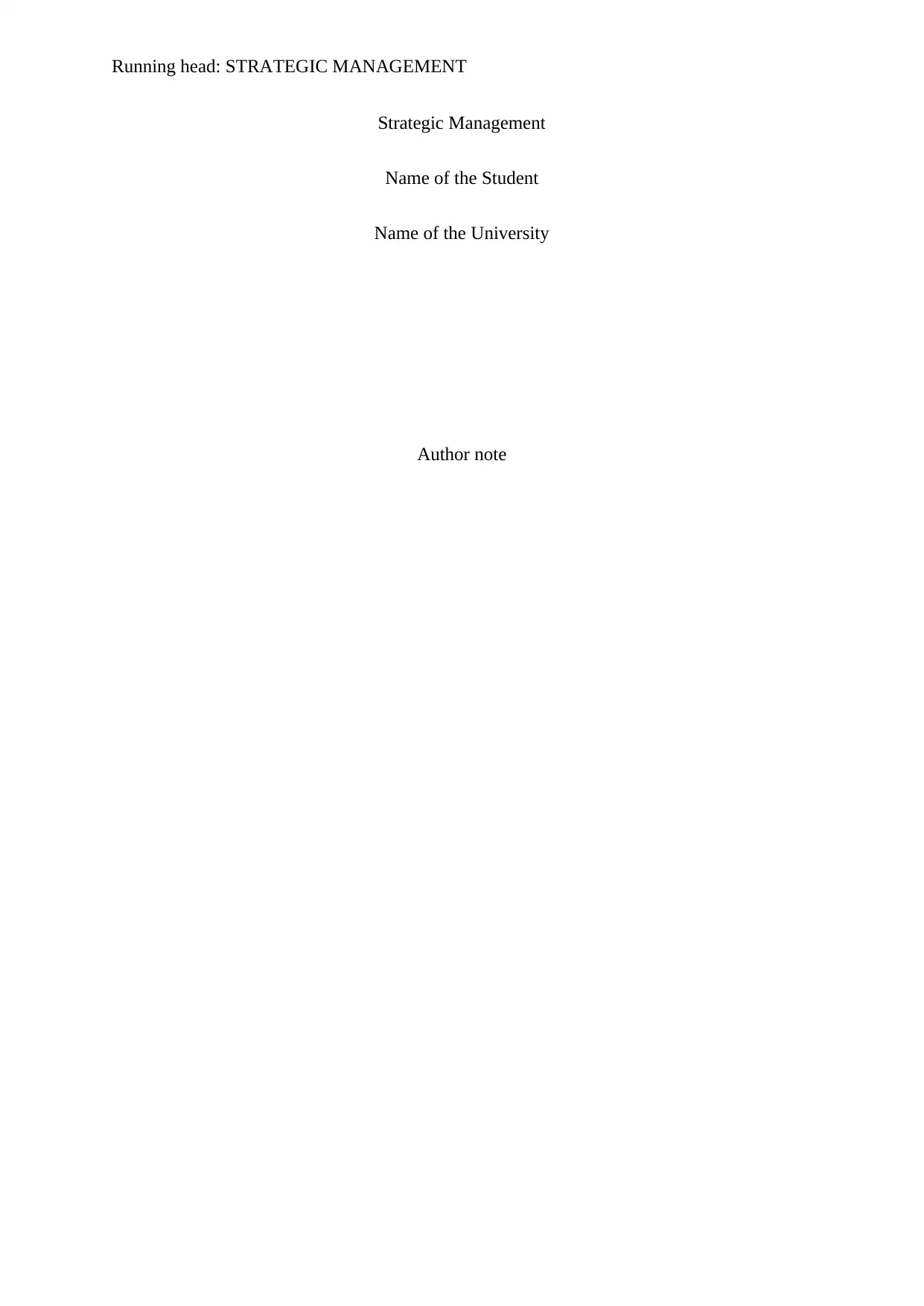
Running head: STRATEGIC MANAGEMENT
Strategic Management
Name of the Student
Name of the University
Author note
Strategic Management
Name of the Student
Name of the University
Author note
Secure Best Marks with AI Grader
Need help grading? Try our AI Grader for instant feedback on your assignments.
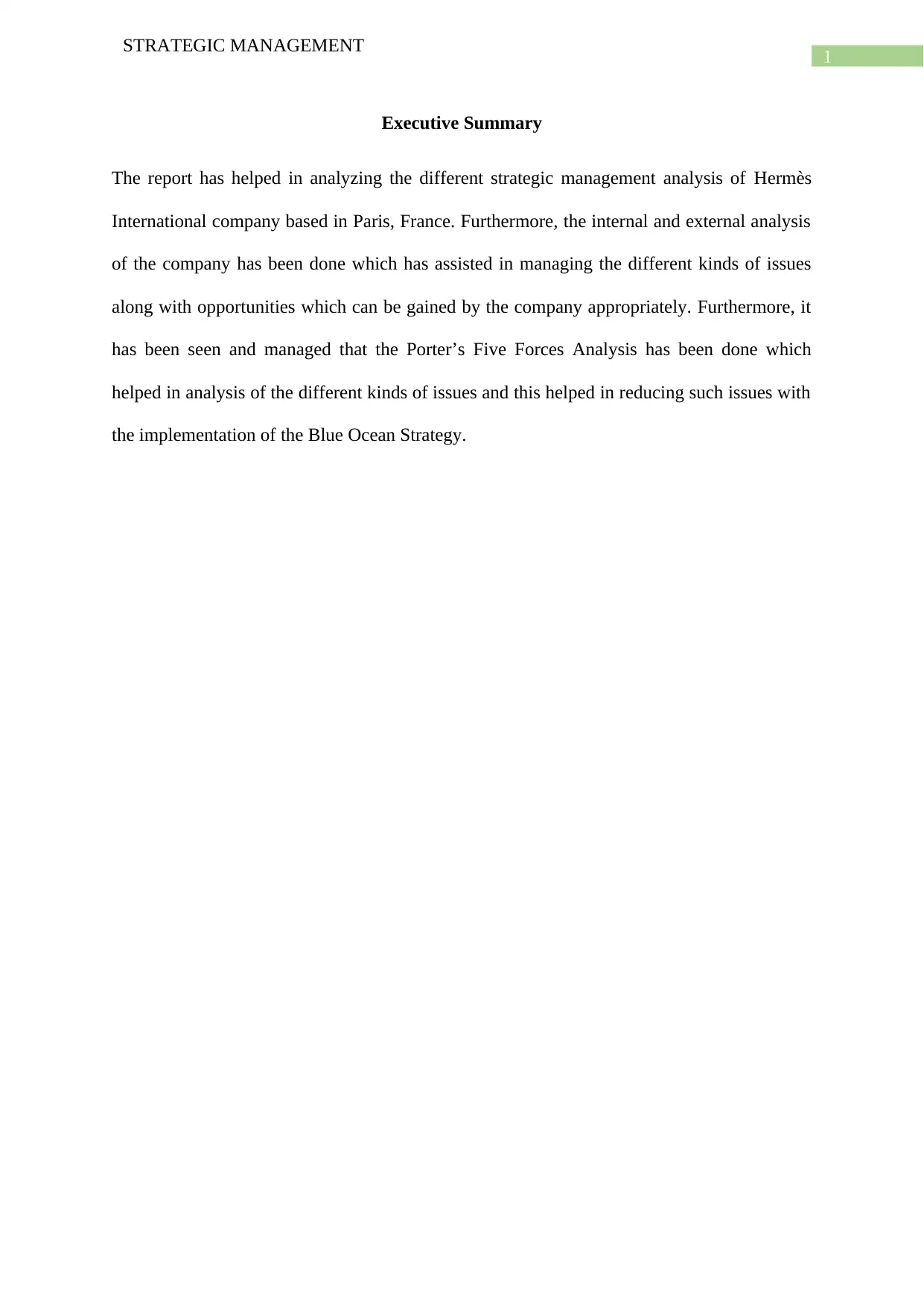
1
STRATEGIC MANAGEMENT
Executive Summary
The report has helped in analyzing the different strategic management analysis of Hermès
International company based in Paris, France. Furthermore, the internal and external analysis
of the company has been done which has assisted in managing the different kinds of issues
along with opportunities which can be gained by the company appropriately. Furthermore, it
has been seen and managed that the Porter’s Five Forces Analysis has been done which
helped in analysis of the different kinds of issues and this helped in reducing such issues with
the implementation of the Blue Ocean Strategy.
STRATEGIC MANAGEMENT
Executive Summary
The report has helped in analyzing the different strategic management analysis of Hermès
International company based in Paris, France. Furthermore, the internal and external analysis
of the company has been done which has assisted in managing the different kinds of issues
along with opportunities which can be gained by the company appropriately. Furthermore, it
has been seen and managed that the Porter’s Five Forces Analysis has been done which
helped in analysis of the different kinds of issues and this helped in reducing such issues with
the implementation of the Blue Ocean Strategy.
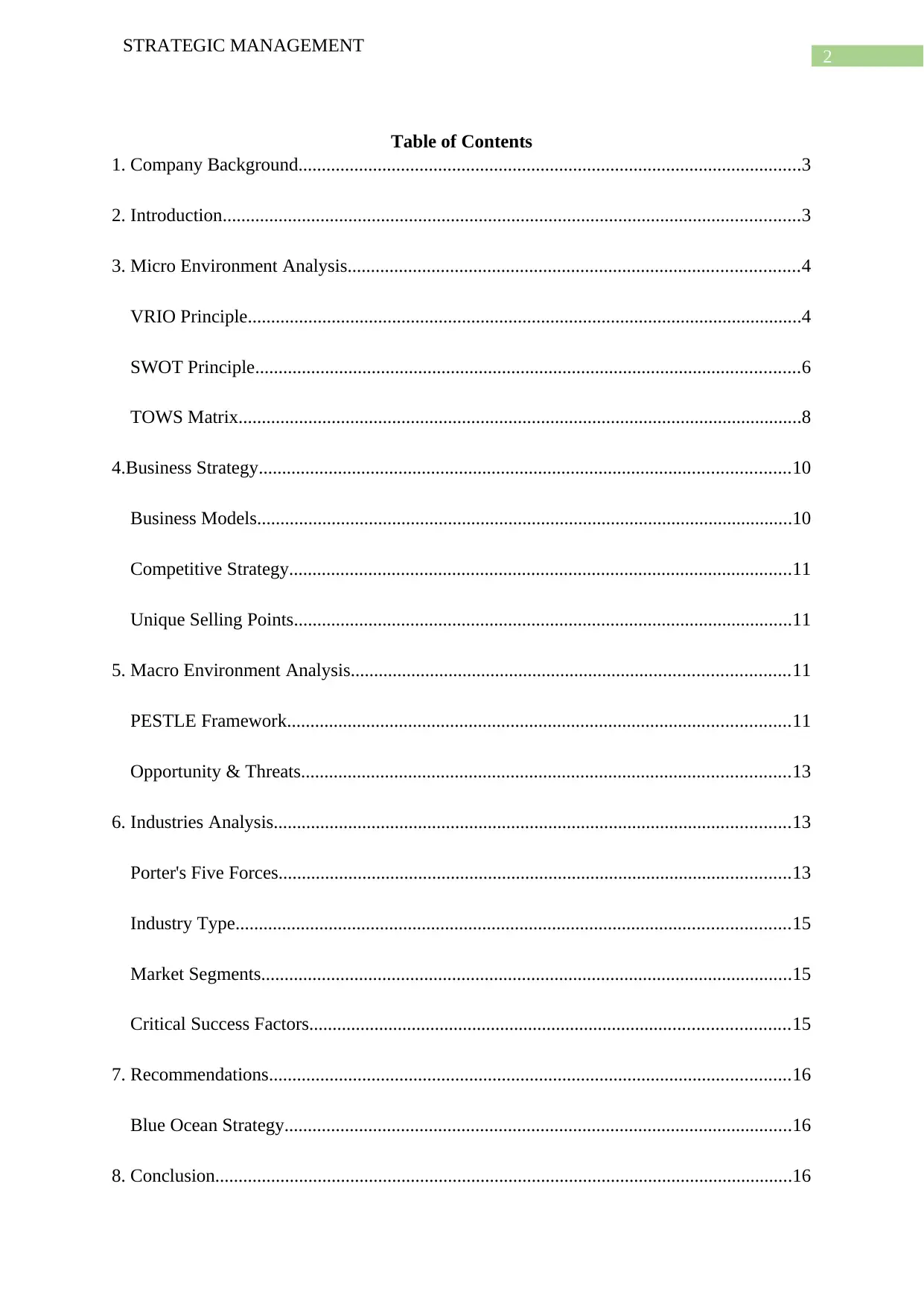
2
STRATEGIC MANAGEMENT
Table of Contents
1. Company Background............................................................................................................3
2. Introduction............................................................................................................................3
3. Micro Environment Analysis.................................................................................................4
VRIO Principle.......................................................................................................................4
SWOT Principle.....................................................................................................................6
TOWS Matrix.........................................................................................................................8
4.Business Strategy..................................................................................................................10
Business Models...................................................................................................................10
Competitive Strategy............................................................................................................11
Unique Selling Points...........................................................................................................11
5. Macro Environment Analysis..............................................................................................11
PESTLE Framework............................................................................................................11
Opportunity & Threats.........................................................................................................13
6. Industries Analysis...............................................................................................................13
Porter's Five Forces..............................................................................................................13
Industry Type.......................................................................................................................15
Market Segments..................................................................................................................15
Critical Success Factors.......................................................................................................15
7. Recommendations................................................................................................................16
Blue Ocean Strategy.............................................................................................................16
8. Conclusion............................................................................................................................16
STRATEGIC MANAGEMENT
Table of Contents
1. Company Background............................................................................................................3
2. Introduction............................................................................................................................3
3. Micro Environment Analysis.................................................................................................4
VRIO Principle.......................................................................................................................4
SWOT Principle.....................................................................................................................6
TOWS Matrix.........................................................................................................................8
4.Business Strategy..................................................................................................................10
Business Models...................................................................................................................10
Competitive Strategy............................................................................................................11
Unique Selling Points...........................................................................................................11
5. Macro Environment Analysis..............................................................................................11
PESTLE Framework............................................................................................................11
Opportunity & Threats.........................................................................................................13
6. Industries Analysis...............................................................................................................13
Porter's Five Forces..............................................................................................................13
Industry Type.......................................................................................................................15
Market Segments..................................................................................................................15
Critical Success Factors.......................................................................................................15
7. Recommendations................................................................................................................16
Blue Ocean Strategy.............................................................................................................16
8. Conclusion............................................................................................................................16
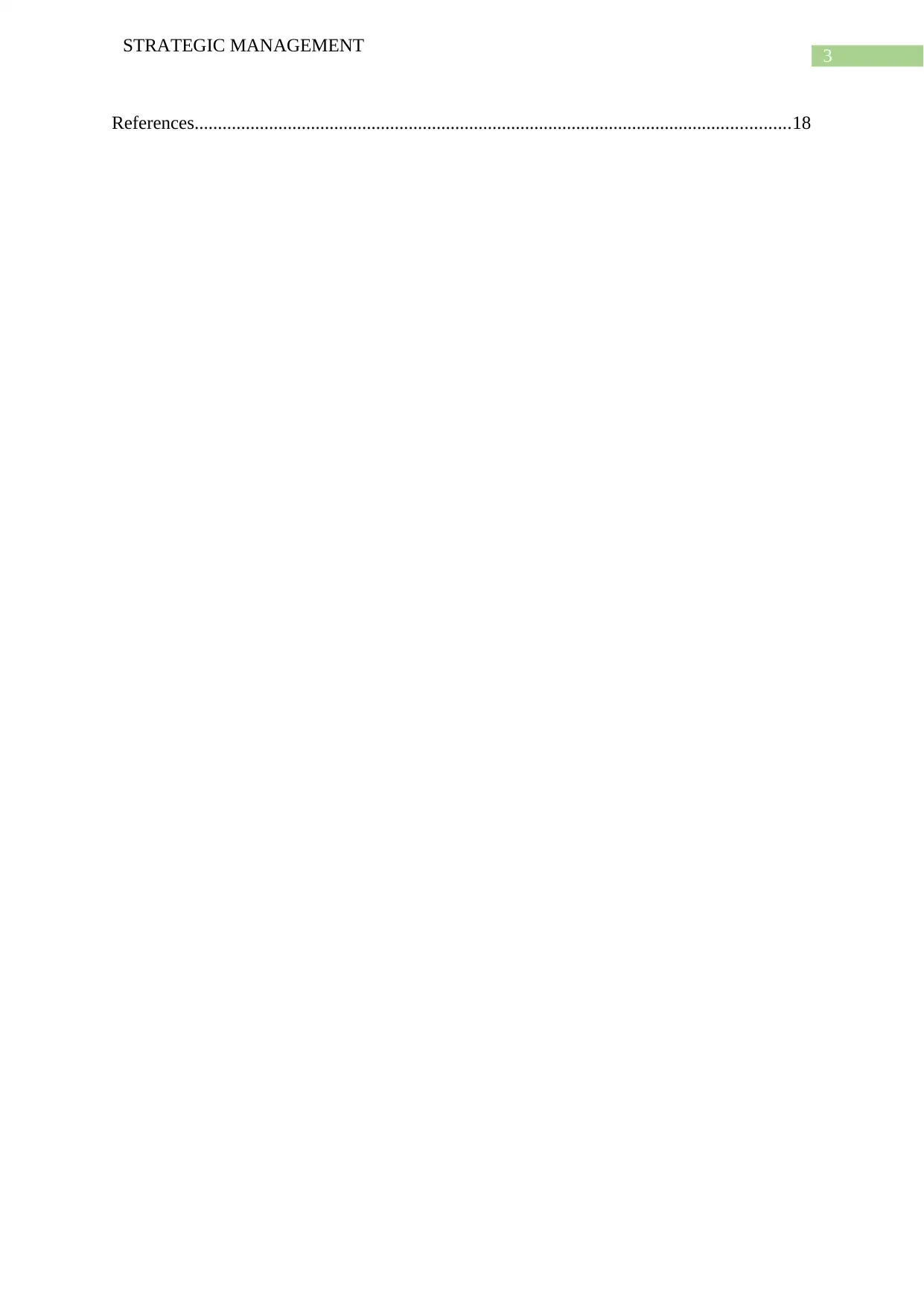
3
STRATEGIC MANAGEMENT
References................................................................................................................................18
STRATEGIC MANAGEMENT
References................................................................................................................................18
Secure Best Marks with AI Grader
Need help grading? Try our AI Grader for instant feedback on your assignments.
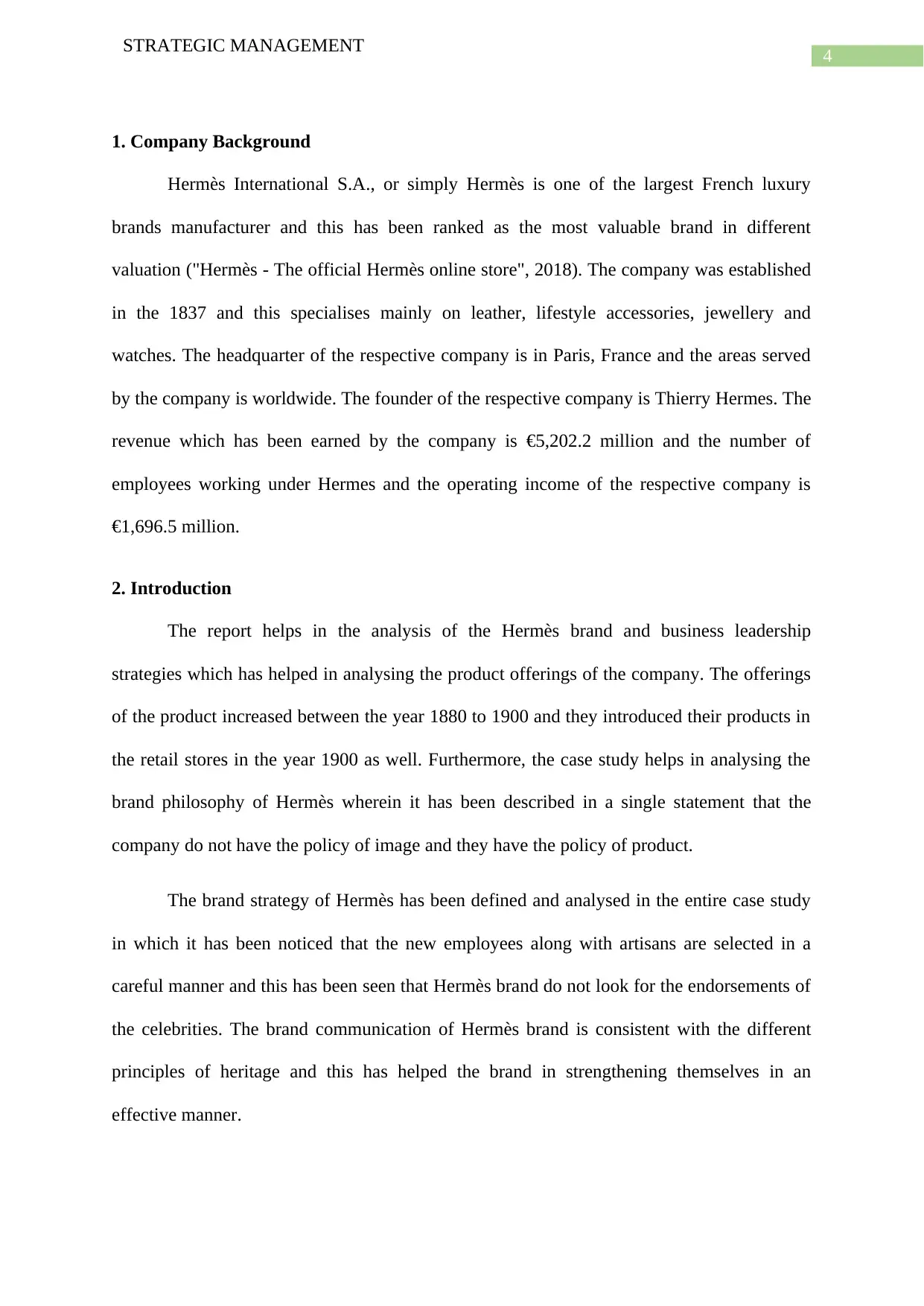
4
STRATEGIC MANAGEMENT
1. Company Background
Hermès International S.A., or simply Hermès is one of the largest French luxury
brands manufacturer and this has been ranked as the most valuable brand in different
valuation ("Hermès - The official Hermès online store", 2018). The company was established
in the 1837 and this specialises mainly on leather, lifestyle accessories, jewellery and
watches. The headquarter of the respective company is in Paris, France and the areas served
by the company is worldwide. The founder of the respective company is Thierry Hermes. The
revenue which has been earned by the company is €5,202.2 million and the number of
employees working under Hermes and the operating income of the respective company is
€1,696.5 million.
2. Introduction
The report helps in the analysis of the Hermès brand and business leadership
strategies which has helped in analysing the product offerings of the company. The offerings
of the product increased between the year 1880 to 1900 and they introduced their products in
the retail stores in the year 1900 as well. Furthermore, the case study helps in analysing the
brand philosophy of Hermès wherein it has been described in a single statement that the
company do not have the policy of image and they have the policy of product.
The brand strategy of Hermès has been defined and analysed in the entire case study
in which it has been noticed that the new employees along with artisans are selected in a
careful manner and this has been seen that Hermès brand do not look for the endorsements of
the celebrities. The brand communication of Hermès brand is consistent with the different
principles of heritage and this has helped the brand in strengthening themselves in an
effective manner.
STRATEGIC MANAGEMENT
1. Company Background
Hermès International S.A., or simply Hermès is one of the largest French luxury
brands manufacturer and this has been ranked as the most valuable brand in different
valuation ("Hermès - The official Hermès online store", 2018). The company was established
in the 1837 and this specialises mainly on leather, lifestyle accessories, jewellery and
watches. The headquarter of the respective company is in Paris, France and the areas served
by the company is worldwide. The founder of the respective company is Thierry Hermes. The
revenue which has been earned by the company is €5,202.2 million and the number of
employees working under Hermes and the operating income of the respective company is
€1,696.5 million.
2. Introduction
The report helps in the analysis of the Hermès brand and business leadership
strategies which has helped in analysing the product offerings of the company. The offerings
of the product increased between the year 1880 to 1900 and they introduced their products in
the retail stores in the year 1900 as well. Furthermore, the case study helps in analysing the
brand philosophy of Hermès wherein it has been described in a single statement that the
company do not have the policy of image and they have the policy of product.
The brand strategy of Hermès has been defined and analysed in the entire case study
in which it has been noticed that the new employees along with artisans are selected in a
careful manner and this has been seen that Hermès brand do not look for the endorsements of
the celebrities. The brand communication of Hermès brand is consistent with the different
principles of heritage and this has helped the brand in strengthening themselves in an
effective manner.
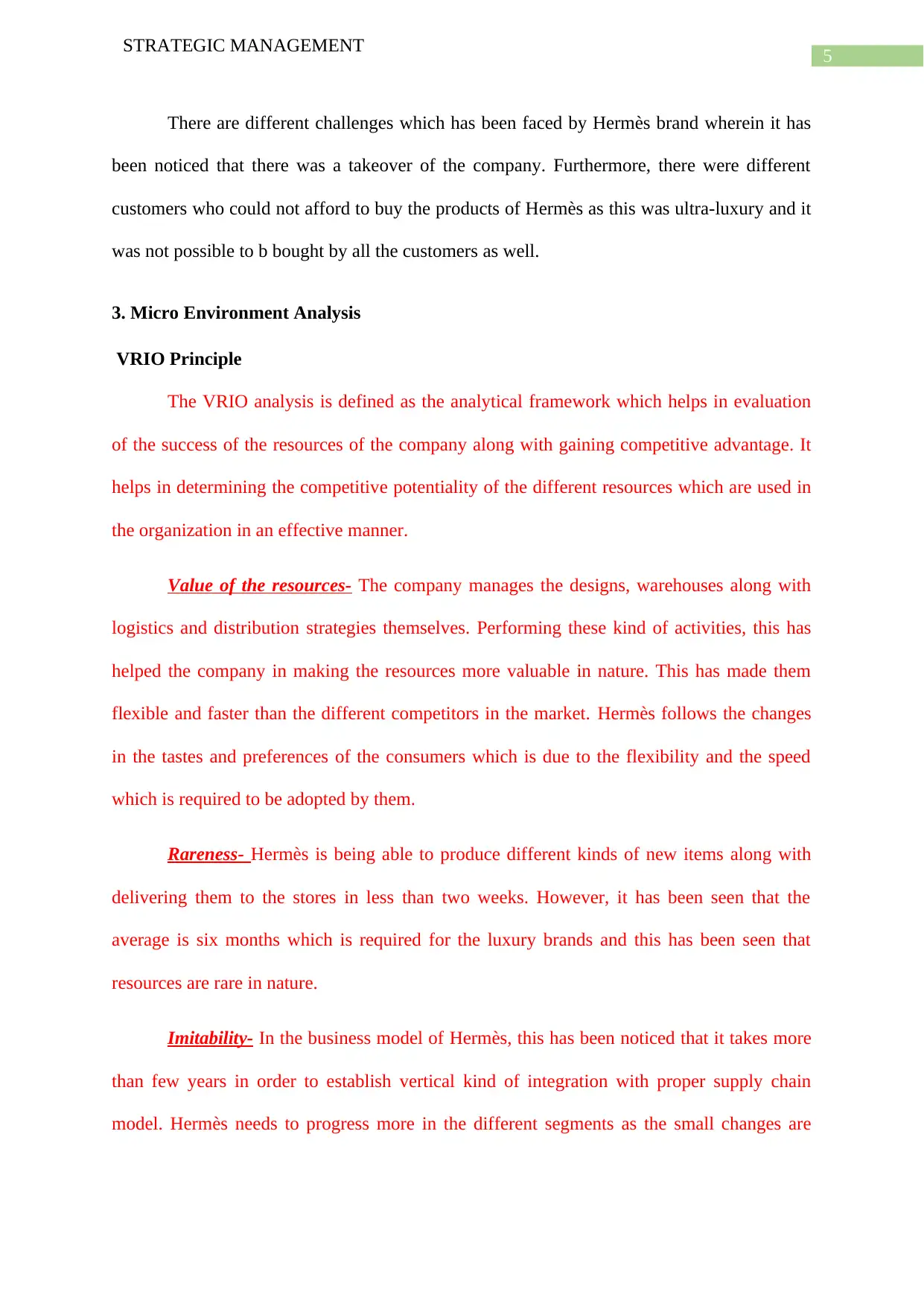
5
STRATEGIC MANAGEMENT
There are different challenges which has been faced by Hermès brand wherein it has
been noticed that there was a takeover of the company. Furthermore, there were different
customers who could not afford to buy the products of Hermès as this was ultra-luxury and it
was not possible to b bought by all the customers as well.
3. Micro Environment Analysis
VRIO Principle
The VRIO analysis is defined as the analytical framework which helps in evaluation
of the success of the resources of the company along with gaining competitive advantage. It
helps in determining the competitive potentiality of the different resources which are used in
the organization in an effective manner.
Value of the resources- The company manages the designs, warehouses along with
logistics and distribution strategies themselves. Performing these kind of activities, this has
helped the company in making the resources more valuable in nature. This has made them
flexible and faster than the different competitors in the market. Hermès follows the changes
in the tastes and preferences of the consumers which is due to the flexibility and the speed
which is required to be adopted by them.
Rareness- Hermès is being able to produce different kinds of new items along with
delivering them to the stores in less than two weeks. However, it has been seen that the
average is six months which is required for the luxury brands and this has been seen that
resources are rare in nature.
Imitability- In the business model of Hermès, this has been noticed that it takes more
than few years in order to establish vertical kind of integration with proper supply chain
model. Hermès needs to progress more in the different segments as the small changes are
STRATEGIC MANAGEMENT
There are different challenges which has been faced by Hermès brand wherein it has
been noticed that there was a takeover of the company. Furthermore, there were different
customers who could not afford to buy the products of Hermès as this was ultra-luxury and it
was not possible to b bought by all the customers as well.
3. Micro Environment Analysis
VRIO Principle
The VRIO analysis is defined as the analytical framework which helps in evaluation
of the success of the resources of the company along with gaining competitive advantage. It
helps in determining the competitive potentiality of the different resources which are used in
the organization in an effective manner.
Value of the resources- The company manages the designs, warehouses along with
logistics and distribution strategies themselves. Performing these kind of activities, this has
helped the company in making the resources more valuable in nature. This has made them
flexible and faster than the different competitors in the market. Hermès follows the changes
in the tastes and preferences of the consumers which is due to the flexibility and the speed
which is required to be adopted by them.
Rareness- Hermès is being able to produce different kinds of new items along with
delivering them to the stores in less than two weeks. However, it has been seen that the
average is six months which is required for the luxury brands and this has been seen that
resources are rare in nature.
Imitability- In the business model of Hermès, this has been noticed that it takes more
than few years in order to establish vertical kind of integration with proper supply chain
model. Hermès needs to progress more in the different segments as the small changes are
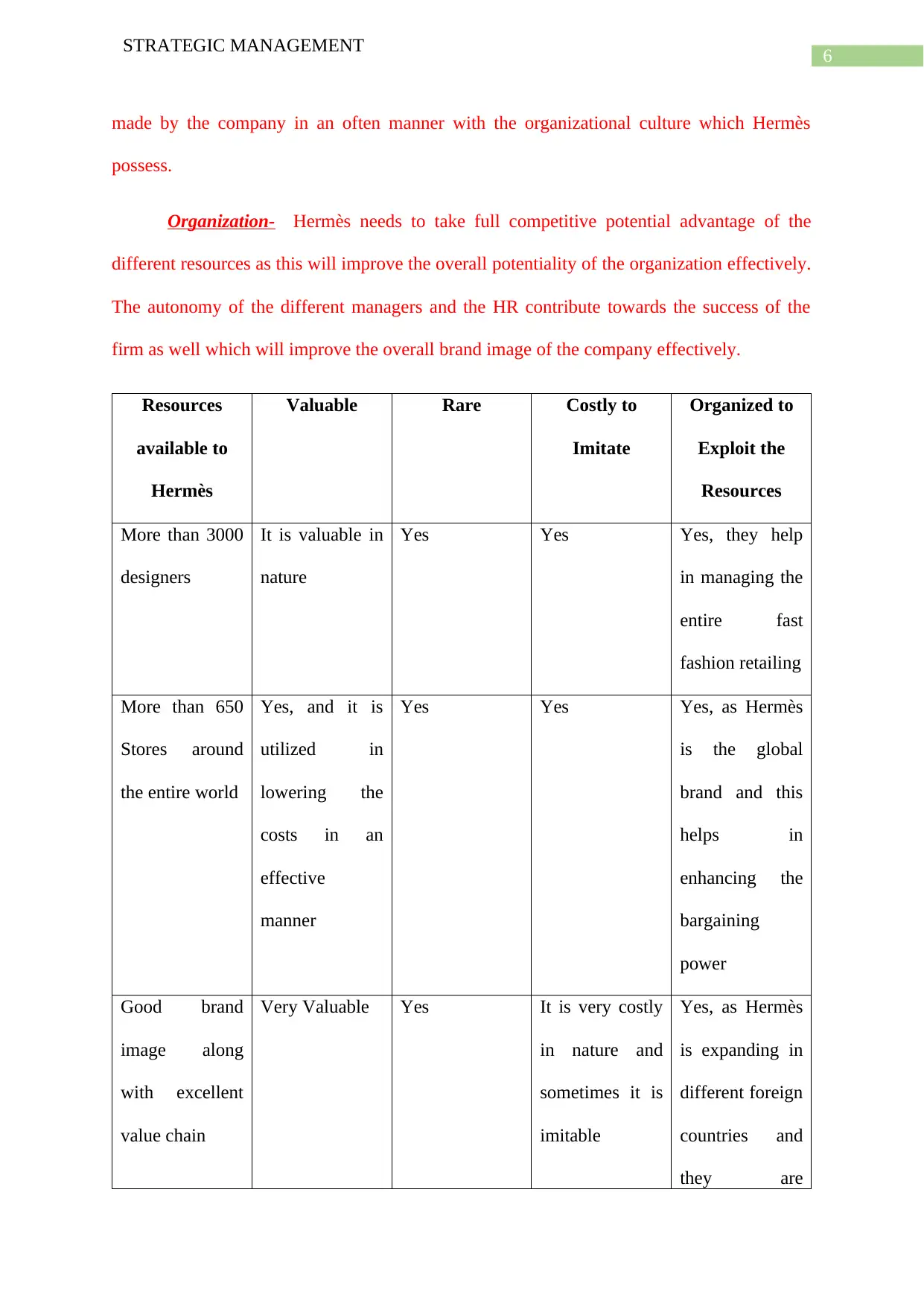
6
STRATEGIC MANAGEMENT
made by the company in an often manner with the organizational culture which Hermès
possess.
Organization- Hermès needs to take full competitive potential advantage of the
different resources as this will improve the overall potentiality of the organization effectively.
The autonomy of the different managers and the HR contribute towards the success of the
firm as well which will improve the overall brand image of the company effectively.
Resources
available to
Hermès
Valuable Rare Costly to
Imitate
Organized to
Exploit the
Resources
More than 3000
designers
It is valuable in
nature
Yes Yes Yes, they help
in managing the
entire fast
fashion retailing
More than 650
Stores around
the entire world
Yes, and it is
utilized in
lowering the
costs in an
effective
manner
Yes Yes Yes, as Hermès
is the global
brand and this
helps in
enhancing the
bargaining
power
Good brand
image along
with excellent
value chain
Very Valuable Yes It is very costly
in nature and
sometimes it is
imitable
Yes, as Hermès
is expanding in
different foreign
countries and
they are
STRATEGIC MANAGEMENT
made by the company in an often manner with the organizational culture which Hermès
possess.
Organization- Hermès needs to take full competitive potential advantage of the
different resources as this will improve the overall potentiality of the organization effectively.
The autonomy of the different managers and the HR contribute towards the success of the
firm as well which will improve the overall brand image of the company effectively.
Resources
available to
Hermès
Valuable Rare Costly to
Imitate
Organized to
Exploit the
Resources
More than 3000
designers
It is valuable in
nature
Yes Yes Yes, they help
in managing the
entire fast
fashion retailing
More than 650
Stores around
the entire world
Yes, and it is
utilized in
lowering the
costs in an
effective
manner
Yes Yes Yes, as Hermès
is the global
brand and this
helps in
enhancing the
bargaining
power
Good brand
image along
with excellent
value chain
Very Valuable Yes It is very costly
in nature and
sometimes it is
imitable
Yes, as Hermès
is expanding in
different foreign
countries and
they are
Paraphrase This Document
Need a fresh take? Get an instant paraphrase of this document with our AI Paraphraser
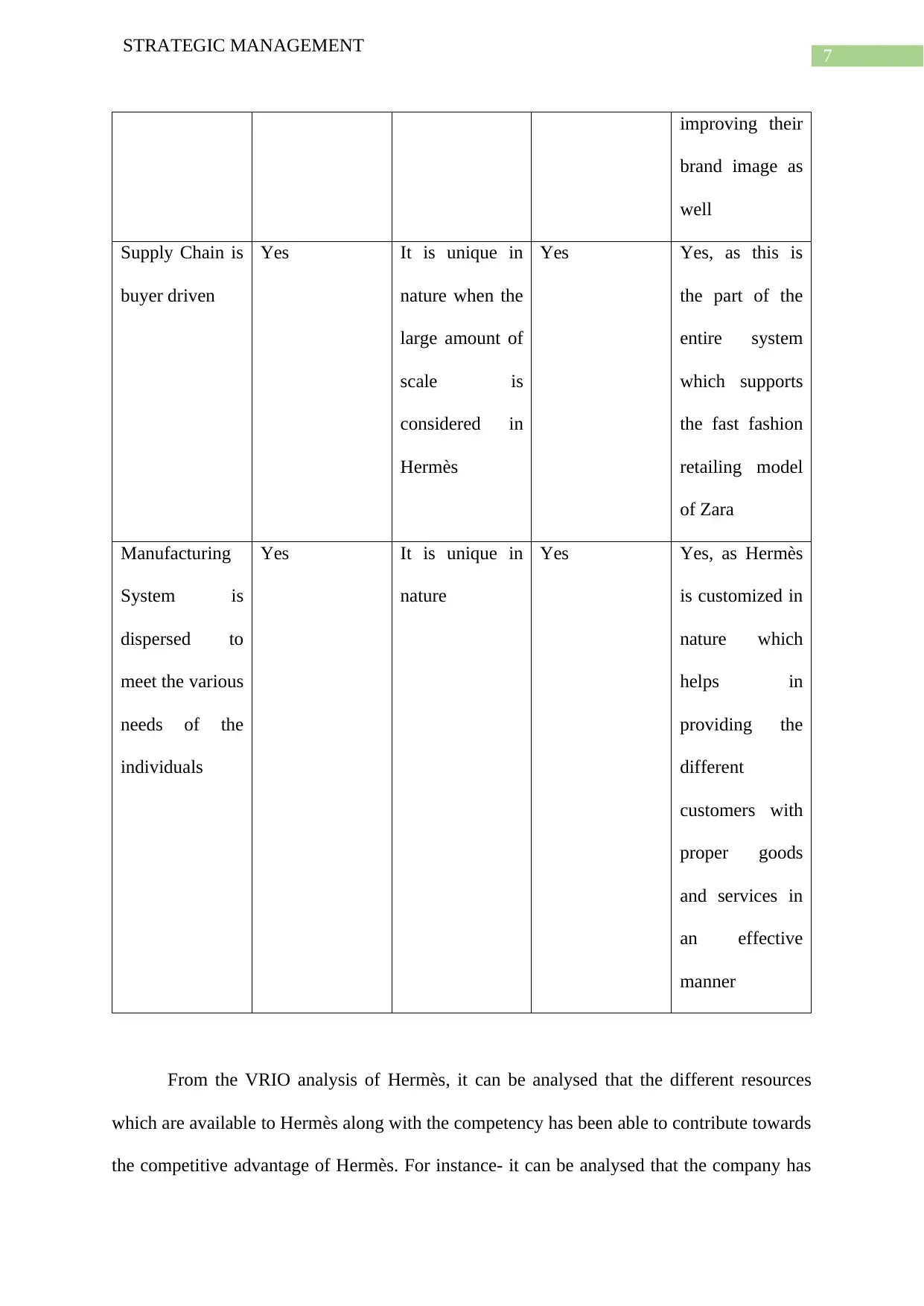
7
STRATEGIC MANAGEMENT
improving their
brand image as
well
Supply Chain is
buyer driven
Yes It is unique in
nature when the
large amount of
scale is
considered in
Hermès
Yes Yes, as this is
the part of the
entire system
which supports
the fast fashion
retailing model
of Zara
Manufacturing
System is
dispersed to
meet the various
needs of the
individuals
Yes It is unique in
nature
Yes Yes, as Hermès
is customized in
nature which
helps in
providing the
different
customers with
proper goods
and services in
an effective
manner
From the VRIO analysis of Hermès, it can be analysed that the different resources
which are available to Hermès along with the competency has been able to contribute towards
the competitive advantage of Hermès. For instance- it can be analysed that the company has
STRATEGIC MANAGEMENT
improving their
brand image as
well
Supply Chain is
buyer driven
Yes It is unique in
nature when the
large amount of
scale is
considered in
Hermès
Yes Yes, as this is
the part of the
entire system
which supports
the fast fashion
retailing model
of Zara
Manufacturing
System is
dispersed to
meet the various
needs of the
individuals
Yes It is unique in
nature
Yes Yes, as Hermès
is customized in
nature which
helps in
providing the
different
customers with
proper goods
and services in
an effective
manner
From the VRIO analysis of Hermès, it can be analysed that the different resources
which are available to Hermès along with the competency has been able to contribute towards
the competitive advantage of Hermès. For instance- it can be analysed that the company has
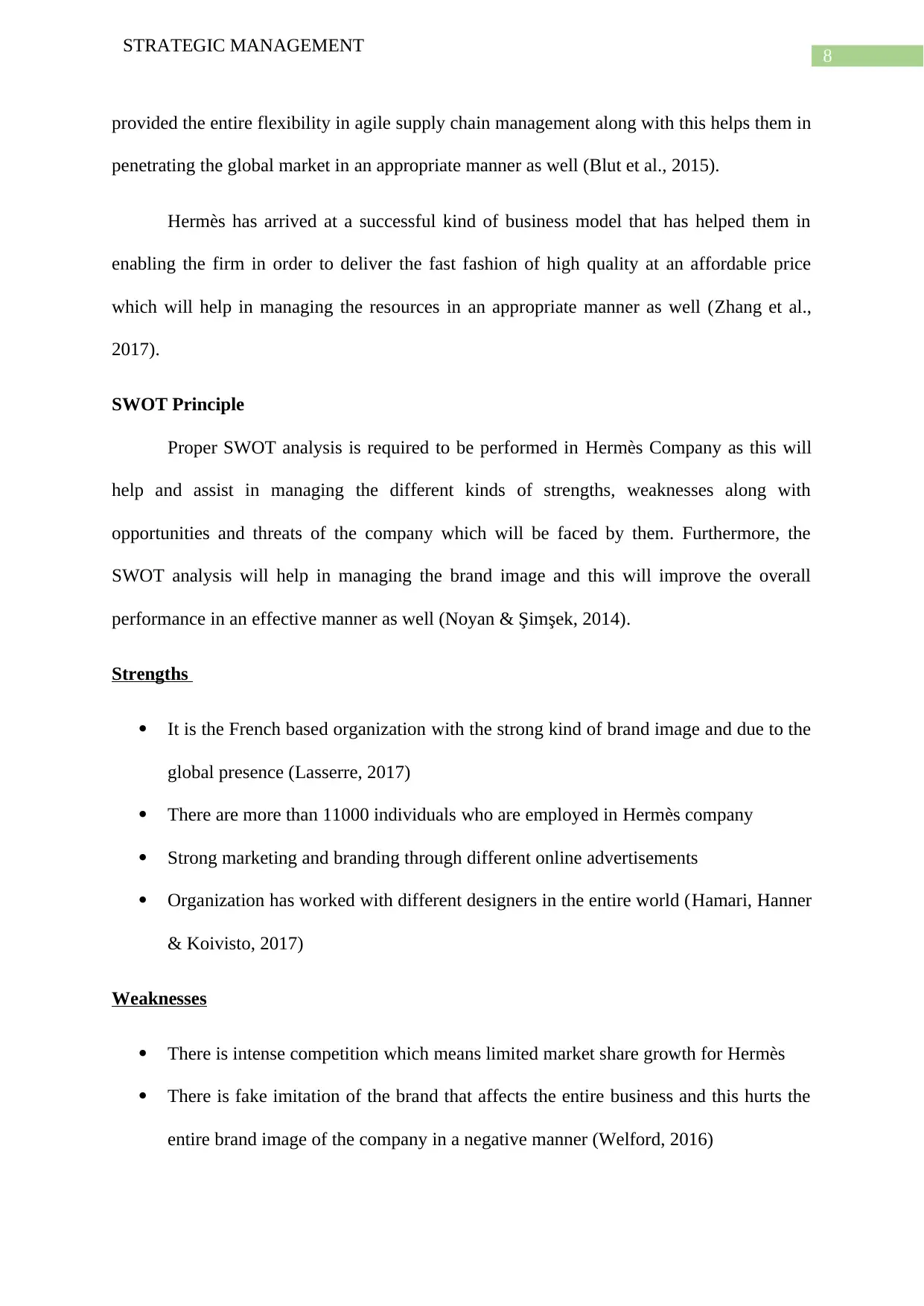
8
STRATEGIC MANAGEMENT
provided the entire flexibility in agile supply chain management along with this helps them in
penetrating the global market in an appropriate manner as well (Blut et al., 2015).
Hermès has arrived at a successful kind of business model that has helped them in
enabling the firm in order to deliver the fast fashion of high quality at an affordable price
which will help in managing the resources in an appropriate manner as well (Zhang et al.,
2017).
SWOT Principle
Proper SWOT analysis is required to be performed in Hermès Company as this will
help and assist in managing the different kinds of strengths, weaknesses along with
opportunities and threats of the company which will be faced by them. Furthermore, the
SWOT analysis will help in managing the brand image and this will improve the overall
performance in an effective manner as well (Noyan & Şimşek, 2014).
Strengths
It is the French based organization with the strong kind of brand image and due to the
global presence (Lasserre, 2017)
There are more than 11000 individuals who are employed in Hermès company
Strong marketing and branding through different online advertisements
Organization has worked with different designers in the entire world (Hamari, Hanner
& Koivisto, 2017)
Weaknesses
There is intense competition which means limited market share growth for Hermès
There is fake imitation of the brand that affects the entire business and this hurts the
entire brand image of the company in a negative manner (Welford, 2016)
STRATEGIC MANAGEMENT
provided the entire flexibility in agile supply chain management along with this helps them in
penetrating the global market in an appropriate manner as well (Blut et al., 2015).
Hermès has arrived at a successful kind of business model that has helped them in
enabling the firm in order to deliver the fast fashion of high quality at an affordable price
which will help in managing the resources in an appropriate manner as well (Zhang et al.,
2017).
SWOT Principle
Proper SWOT analysis is required to be performed in Hermès Company as this will
help and assist in managing the different kinds of strengths, weaknesses along with
opportunities and threats of the company which will be faced by them. Furthermore, the
SWOT analysis will help in managing the brand image and this will improve the overall
performance in an effective manner as well (Noyan & Şimşek, 2014).
Strengths
It is the French based organization with the strong kind of brand image and due to the
global presence (Lasserre, 2017)
There are more than 11000 individuals who are employed in Hermès company
Strong marketing and branding through different online advertisements
Organization has worked with different designers in the entire world (Hamari, Hanner
& Koivisto, 2017)
Weaknesses
There is intense competition which means limited market share growth for Hermès
There is fake imitation of the brand that affects the entire business and this hurts the
entire brand image of the company in a negative manner (Welford, 2016)
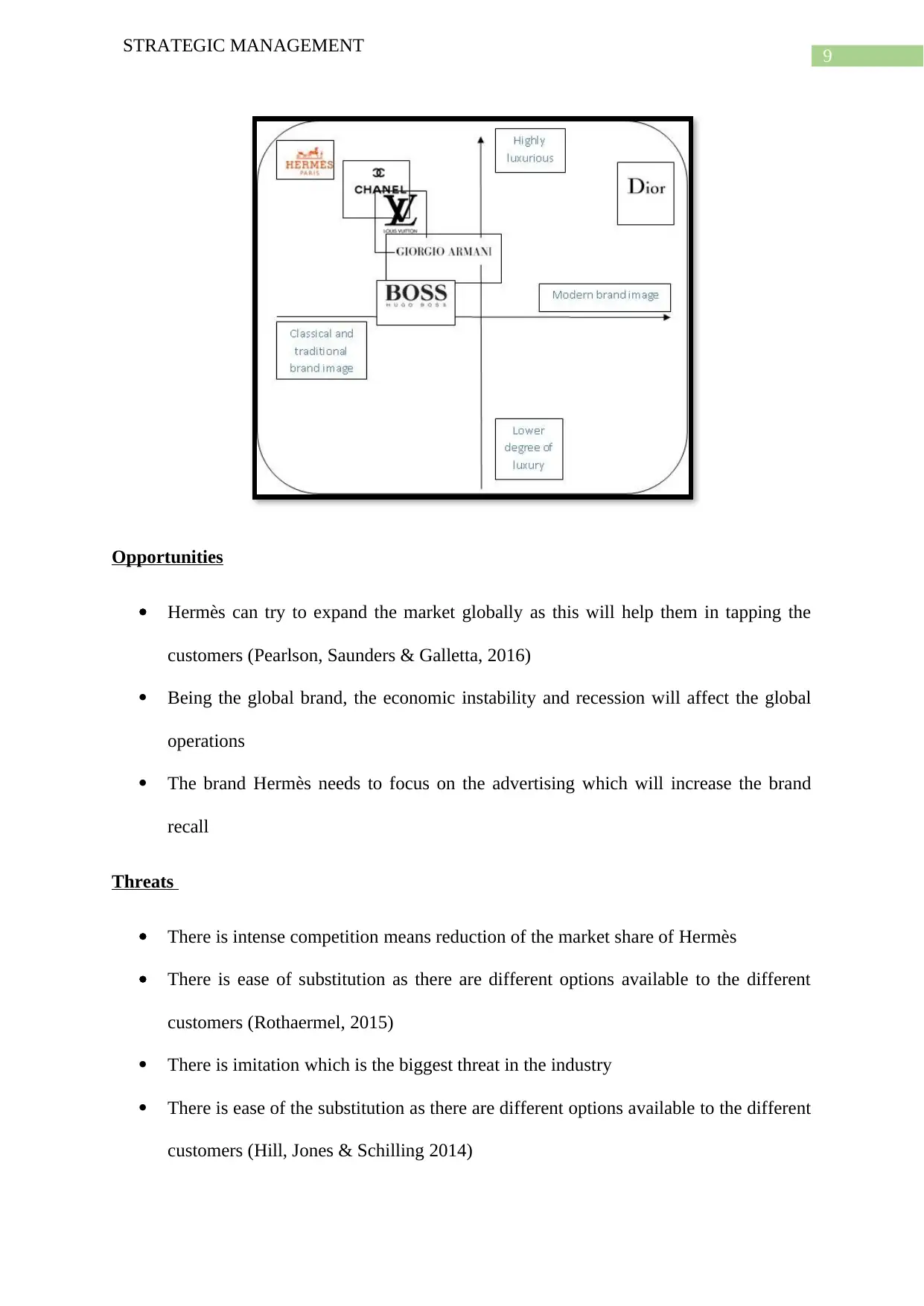
9
STRATEGIC MANAGEMENT
Opportunities
Hermès can try to expand the market globally as this will help them in tapping the
customers (Pearlson, Saunders & Galletta, 2016)
Being the global brand, the economic instability and recession will affect the global
operations
The brand Hermès needs to focus on the advertising which will increase the brand
recall
Threats
There is intense competition means reduction of the market share of Hermès
There is ease of substitution as there are different options available to the different
customers (Rothaermel, 2015)
There is imitation which is the biggest threat in the industry
There is ease of the substitution as there are different options available to the different
customers (Hill, Jones & Schilling 2014)
STRATEGIC MANAGEMENT
Opportunities
Hermès can try to expand the market globally as this will help them in tapping the
customers (Pearlson, Saunders & Galletta, 2016)
Being the global brand, the economic instability and recession will affect the global
operations
The brand Hermès needs to focus on the advertising which will increase the brand
recall
Threats
There is intense competition means reduction of the market share of Hermès
There is ease of substitution as there are different options available to the different
customers (Rothaermel, 2015)
There is imitation which is the biggest threat in the industry
There is ease of the substitution as there are different options available to the different
customers (Hill, Jones & Schilling 2014)
Secure Best Marks with AI Grader
Need help grading? Try our AI Grader for instant feedback on your assignments.
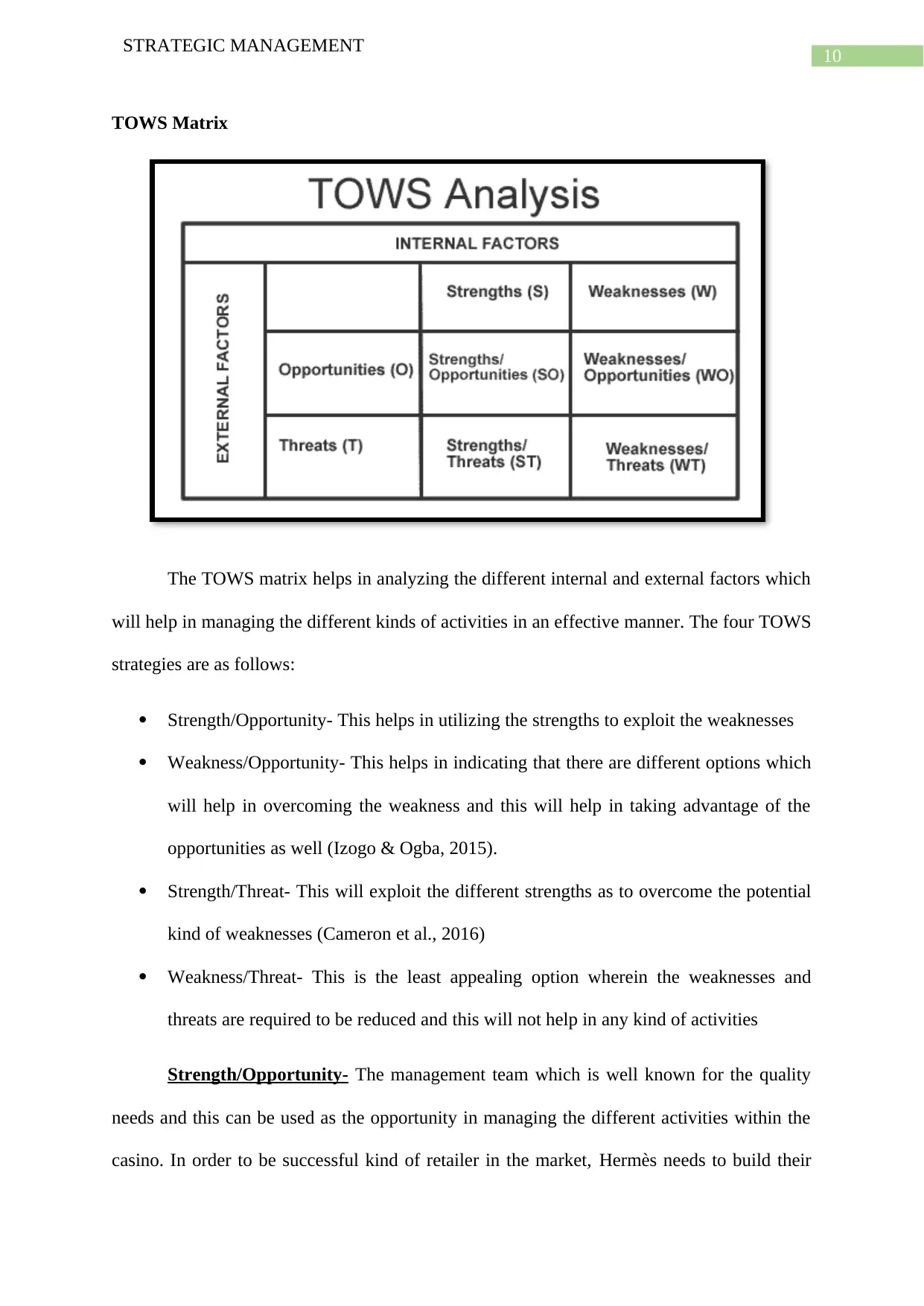
10
STRATEGIC MANAGEMENT
TOWS Matrix
The TOWS matrix helps in analyzing the different internal and external factors which
will help in managing the different kinds of activities in an effective manner. The four TOWS
strategies are as follows:
Strength/Opportunity- This helps in utilizing the strengths to exploit the weaknesses
Weakness/Opportunity- This helps in indicating that there are different options which
will help in overcoming the weakness and this will help in taking advantage of the
opportunities as well (Izogo & Ogba, 2015).
Strength/Threat- This will exploit the different strengths as to overcome the potential
kind of weaknesses (Cameron et al., 2016)
Weakness/Threat- This is the least appealing option wherein the weaknesses and
threats are required to be reduced and this will not help in any kind of activities
Strength/Opportunity- The management team which is well known for the quality
needs and this can be used as the opportunity in managing the different activities within the
casino. In order to be successful kind of retailer in the market, Hermès needs to build their
STRATEGIC MANAGEMENT
TOWS Matrix
The TOWS matrix helps in analyzing the different internal and external factors which
will help in managing the different kinds of activities in an effective manner. The four TOWS
strategies are as follows:
Strength/Opportunity- This helps in utilizing the strengths to exploit the weaknesses
Weakness/Opportunity- This helps in indicating that there are different options which
will help in overcoming the weakness and this will help in taking advantage of the
opportunities as well (Izogo & Ogba, 2015).
Strength/Threat- This will exploit the different strengths as to overcome the potential
kind of weaknesses (Cameron et al., 2016)
Weakness/Threat- This is the least appealing option wherein the weaknesses and
threats are required to be reduced and this will not help in any kind of activities
Strength/Opportunity- The management team which is well known for the quality
needs and this can be used as the opportunity in managing the different activities within the
casino. In order to be successful kind of retailer in the market, Hermès needs to build their
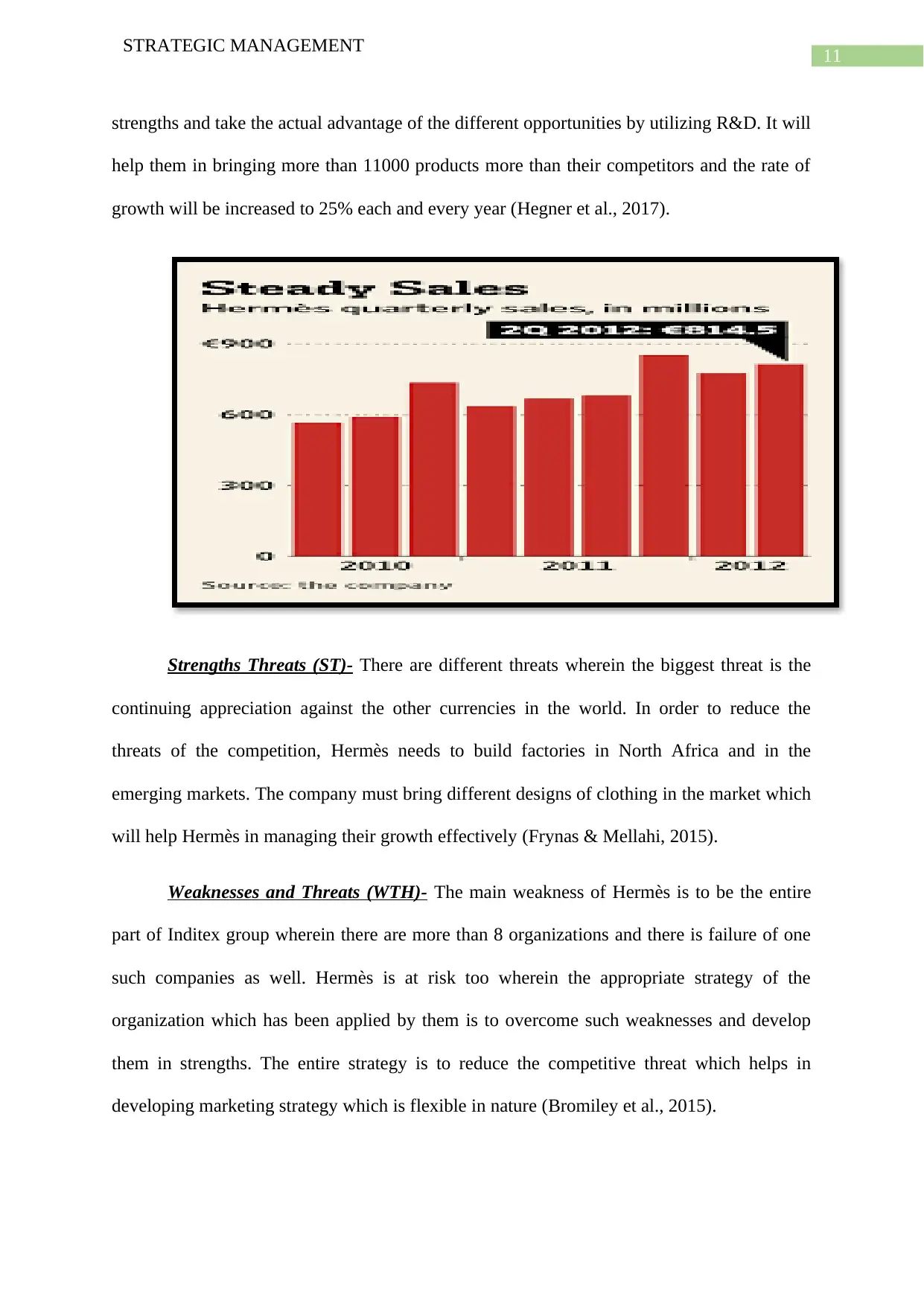
11
STRATEGIC MANAGEMENT
strengths and take the actual advantage of the different opportunities by utilizing R&D. It will
help them in bringing more than 11000 products more than their competitors and the rate of
growth will be increased to 25% each and every year (Hegner et al., 2017).
Strengths Threats (ST)- There are different threats wherein the biggest threat is the
continuing appreciation against the other currencies in the world. In order to reduce the
threats of the competition, Hermès needs to build factories in North Africa and in the
emerging markets. The company must bring different designs of clothing in the market which
will help Hermès in managing their growth effectively (Frynas & Mellahi, 2015).
Weaknesses and Threats (WTH)- The main weakness of Hermès is to be the entire
part of Inditex group wherein there are more than 8 organizations and there is failure of one
such companies as well. Hermès is at risk too wherein the appropriate strategy of the
organization which has been applied by them is to overcome such weaknesses and develop
them in strengths. The entire strategy is to reduce the competitive threat which helps in
developing marketing strategy which is flexible in nature (Bromiley et al., 2015).
STRATEGIC MANAGEMENT
strengths and take the actual advantage of the different opportunities by utilizing R&D. It will
help them in bringing more than 11000 products more than their competitors and the rate of
growth will be increased to 25% each and every year (Hegner et al., 2017).
Strengths Threats (ST)- There are different threats wherein the biggest threat is the
continuing appreciation against the other currencies in the world. In order to reduce the
threats of the competition, Hermès needs to build factories in North Africa and in the
emerging markets. The company must bring different designs of clothing in the market which
will help Hermès in managing their growth effectively (Frynas & Mellahi, 2015).
Weaknesses and Threats (WTH)- The main weakness of Hermès is to be the entire
part of Inditex group wherein there are more than 8 organizations and there is failure of one
such companies as well. Hermès is at risk too wherein the appropriate strategy of the
organization which has been applied by them is to overcome such weaknesses and develop
them in strengths. The entire strategy is to reduce the competitive threat which helps in
developing marketing strategy which is flexible in nature (Bromiley et al., 2015).
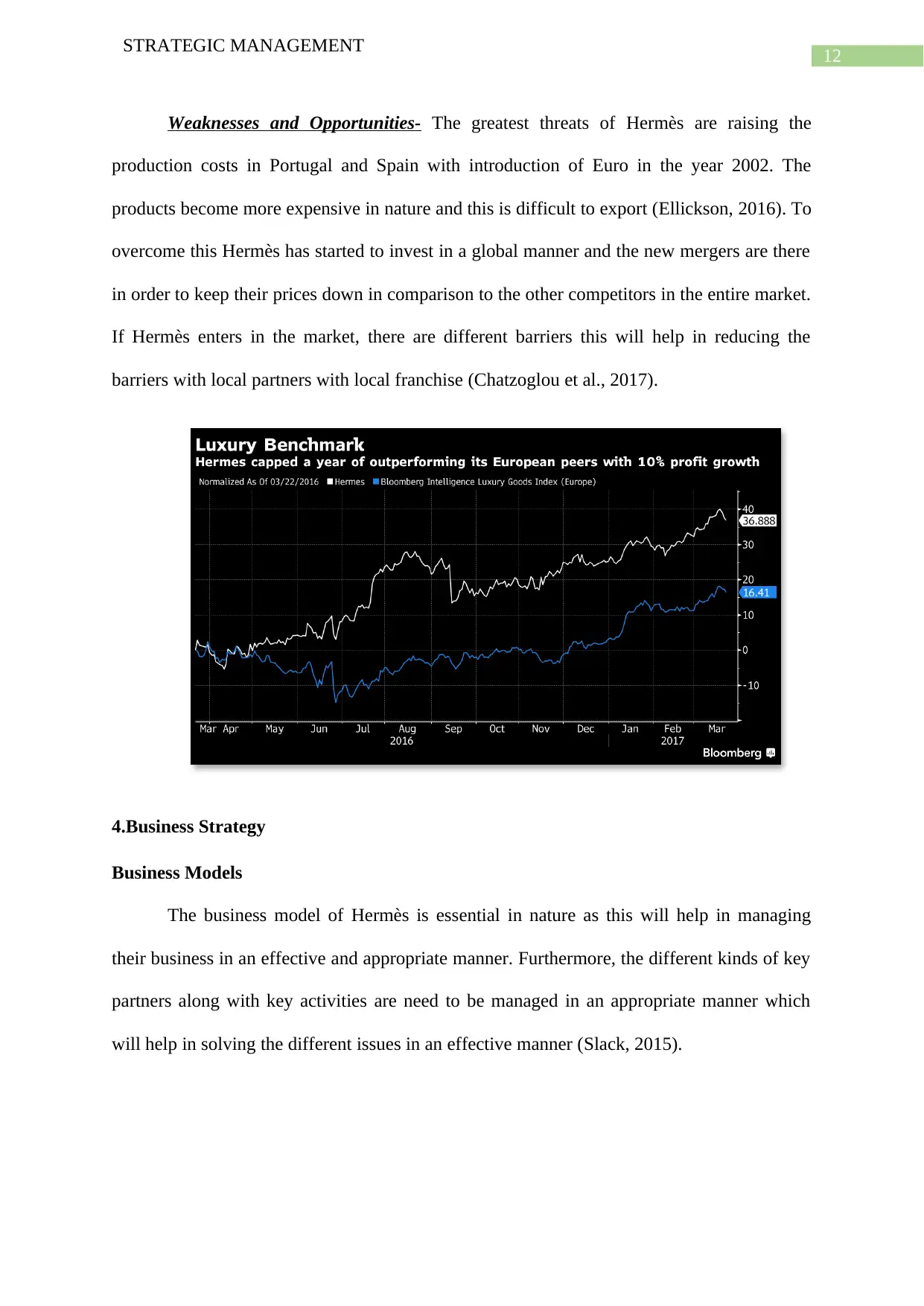
12
STRATEGIC MANAGEMENT
Weaknesses and Opportunities- The greatest threats of Hermès are raising the
production costs in Portugal and Spain with introduction of Euro in the year 2002. The
products become more expensive in nature and this is difficult to export (Ellickson, 2016). To
overcome this Hermès has started to invest in a global manner and the new mergers are there
in order to keep their prices down in comparison to the other competitors in the entire market.
If Hermès enters in the market, there are different barriers this will help in reducing the
barriers with local partners with local franchise (Chatzoglou et al., 2017).
4.Business Strategy
Business Models
The business model of Hermès is essential in nature as this will help in managing
their business in an effective and appropriate manner. Furthermore, the different kinds of key
partners along with key activities are need to be managed in an appropriate manner which
will help in solving the different issues in an effective manner (Slack, 2015).
STRATEGIC MANAGEMENT
Weaknesses and Opportunities- The greatest threats of Hermès are raising the
production costs in Portugal and Spain with introduction of Euro in the year 2002. The
products become more expensive in nature and this is difficult to export (Ellickson, 2016). To
overcome this Hermès has started to invest in a global manner and the new mergers are there
in order to keep their prices down in comparison to the other competitors in the entire market.
If Hermès enters in the market, there are different barriers this will help in reducing the
barriers with local partners with local franchise (Chatzoglou et al., 2017).
4.Business Strategy
Business Models
The business model of Hermès is essential in nature as this will help in managing
their business in an effective and appropriate manner. Furthermore, the different kinds of key
partners along with key activities are need to be managed in an appropriate manner which
will help in solving the different issues in an effective manner (Slack, 2015).
Paraphrase This Document
Need a fresh take? Get an instant paraphrase of this document with our AI Paraphraser

13
STRATEGIC MANAGEMENT
Key Partners
The
different
factories in
Spain
Shopping
Centers and
malls
Producers
of Textile
Magazines
based on
fashion
Key Activities
Shipping
Orders
Customer
Service
E-
Commerce
Value
Proposition
High
quality
kind of
design
clothing at
low cost
Customer
Relationships
Onsite
representatives
along with
phone and
web
Customer
Segments
Fashionist
College
students
Price
conscious
and young
generation
Mid
Income
Shopper
Key Resources
Online
Shops
Logistics
Cost of
design
Channels
Web
distribution
Shops
Cost Structure
Materials - $500,000
Advertisements- $500,000
Logistics- $700,000
Cost of the design- $500,000
Revenue Streams
In stores sales – $767000
Online Sales- $3875000
Competitive Strategy
Hermès is competing with different top fashion organizations present in the entire
world, however there are few characteristics of Hermès which helps them in being different
from the other competitors in the market and stand out in the entire crowd as well (Eichorn,
2018). Firstly, Hermès try to take advantage of the current and foremost technological aspect
as this helps in controlling the various aspects of the process of the design, distribution along
with the production process as well (Gereffi & Fernandez-Stark, 2016).
STRATEGIC MANAGEMENT
Key Partners
The
different
factories in
Spain
Shopping
Centers and
malls
Producers
of Textile
Magazines
based on
fashion
Key Activities
Shipping
Orders
Customer
Service
E-
Commerce
Value
Proposition
High
quality
kind of
design
clothing at
low cost
Customer
Relationships
Onsite
representatives
along with
phone and
web
Customer
Segments
Fashionist
College
students
Price
conscious
and young
generation
Mid
Income
Shopper
Key Resources
Online
Shops
Logistics
Cost of
design
Channels
Web
distribution
Shops
Cost Structure
Materials - $500,000
Advertisements- $500,000
Logistics- $700,000
Cost of the design- $500,000
Revenue Streams
In stores sales – $767000
Online Sales- $3875000
Competitive Strategy
Hermès is competing with different top fashion organizations present in the entire
world, however there are few characteristics of Hermès which helps them in being different
from the other competitors in the market and stand out in the entire crowd as well (Eichorn,
2018). Firstly, Hermès try to take advantage of the current and foremost technological aspect
as this helps in controlling the various aspects of the process of the design, distribution along
with the production process as well (Gereffi & Fernandez-Stark, 2016).
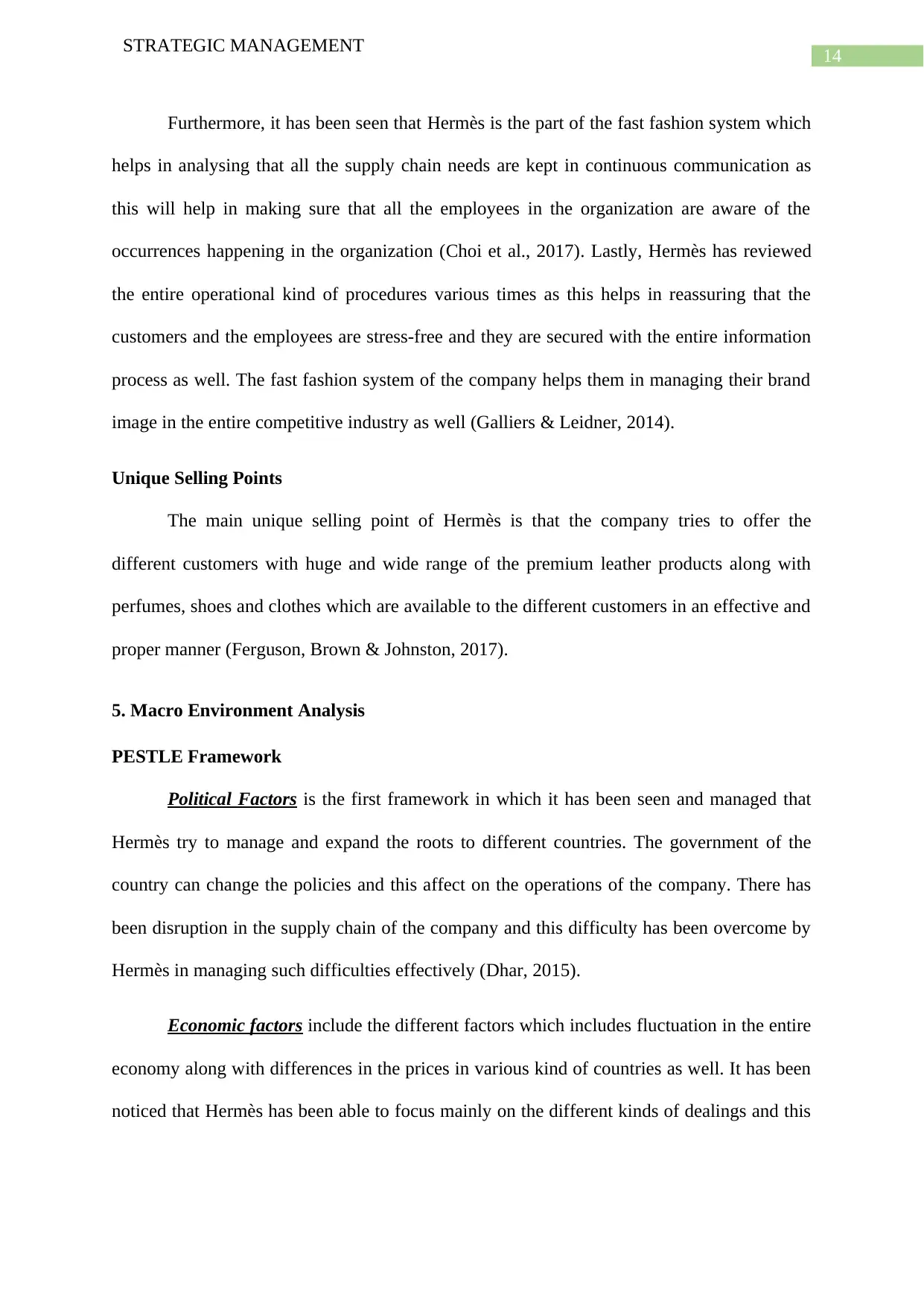
14
STRATEGIC MANAGEMENT
Furthermore, it has been seen that Hermès is the part of the fast fashion system which
helps in analysing that all the supply chain needs are kept in continuous communication as
this will help in making sure that all the employees in the organization are aware of the
occurrences happening in the organization (Choi et al., 2017). Lastly, Hermès has reviewed
the entire operational kind of procedures various times as this helps in reassuring that the
customers and the employees are stress-free and they are secured with the entire information
process as well. The fast fashion system of the company helps them in managing their brand
image in the entire competitive industry as well (Galliers & Leidner, 2014).
Unique Selling Points
The main unique selling point of Hermès is that the company tries to offer the
different customers with huge and wide range of the premium leather products along with
perfumes, shoes and clothes which are available to the different customers in an effective and
proper manner (Ferguson, Brown & Johnston, 2017).
5. Macro Environment Analysis
PESTLE Framework
Political Factors is the first framework in which it has been seen and managed that
Hermès try to manage and expand the roots to different countries. The government of the
country can change the policies and this affect on the operations of the company. There has
been disruption in the supply chain of the company and this difficulty has been overcome by
Hermès in managing such difficulties effectively (Dhar, 2015).
Economic factors include the different factors which includes fluctuation in the entire
economy along with differences in the prices in various kind of countries as well. It has been
noticed that Hermès has been able to focus mainly on the different kinds of dealings and this
STRATEGIC MANAGEMENT
Furthermore, it has been seen that Hermès is the part of the fast fashion system which
helps in analysing that all the supply chain needs are kept in continuous communication as
this will help in making sure that all the employees in the organization are aware of the
occurrences happening in the organization (Choi et al., 2017). Lastly, Hermès has reviewed
the entire operational kind of procedures various times as this helps in reassuring that the
customers and the employees are stress-free and they are secured with the entire information
process as well. The fast fashion system of the company helps them in managing their brand
image in the entire competitive industry as well (Galliers & Leidner, 2014).
Unique Selling Points
The main unique selling point of Hermès is that the company tries to offer the
different customers with huge and wide range of the premium leather products along with
perfumes, shoes and clothes which are available to the different customers in an effective and
proper manner (Ferguson, Brown & Johnston, 2017).
5. Macro Environment Analysis
PESTLE Framework
Political Factors is the first framework in which it has been seen and managed that
Hermès try to manage and expand the roots to different countries. The government of the
country can change the policies and this affect on the operations of the company. There has
been disruption in the supply chain of the company and this difficulty has been overcome by
Hermès in managing such difficulties effectively (Dhar, 2015).
Economic factors include the different factors which includes fluctuation in the entire
economy along with differences in the prices in various kind of countries as well. It has been
noticed that Hermès has been able to focus mainly on the different kinds of dealings and this
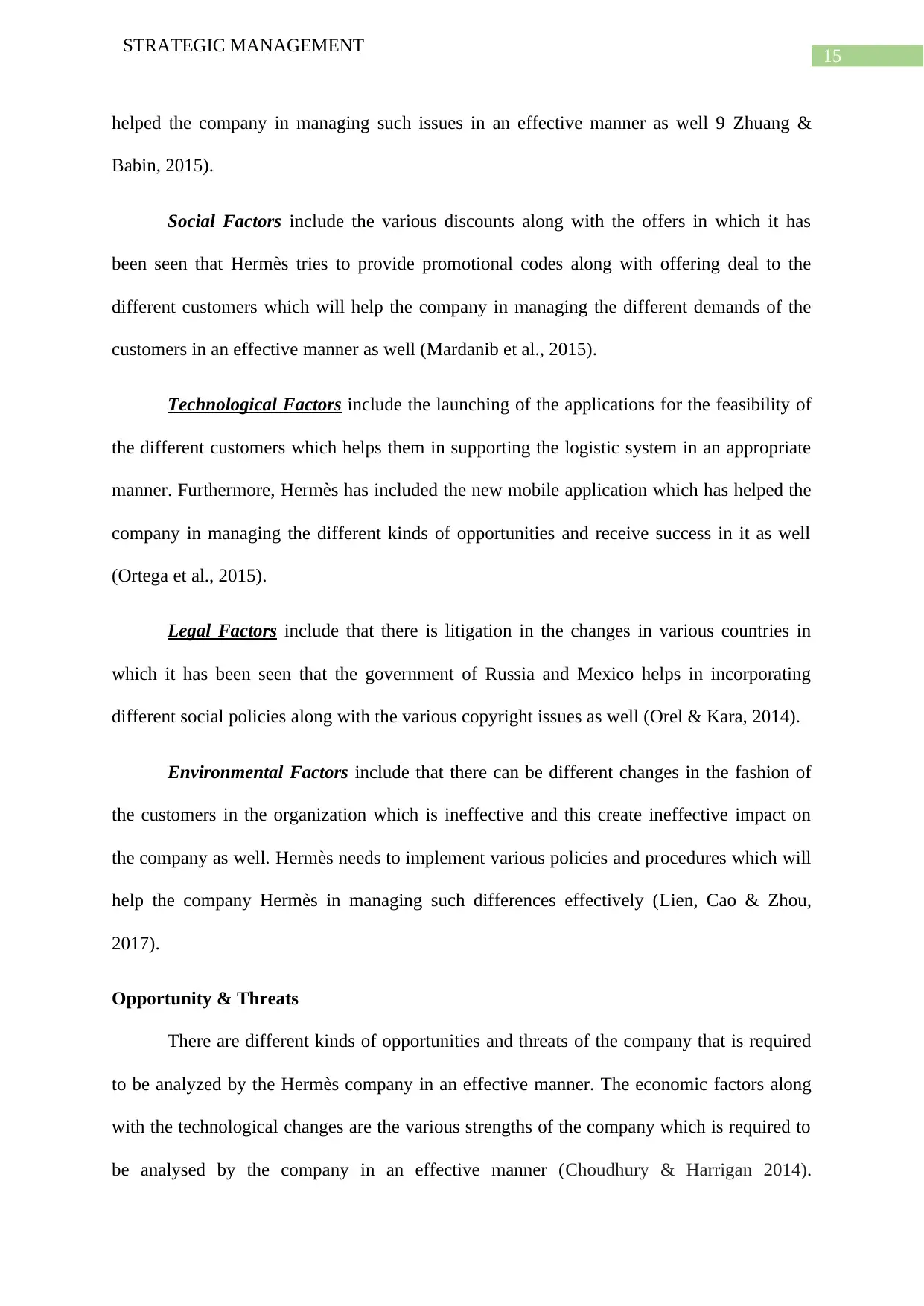
15
STRATEGIC MANAGEMENT
helped the company in managing such issues in an effective manner as well 9 Zhuang &
Babin, 2015).
Social Factors include the various discounts along with the offers in which it has
been seen that Hermès tries to provide promotional codes along with offering deal to the
different customers which will help the company in managing the different demands of the
customers in an effective manner as well (Mardanib et al., 2015).
Technological Factors include the launching of the applications for the feasibility of
the different customers which helps them in supporting the logistic system in an appropriate
manner. Furthermore, Hermès has included the new mobile application which has helped the
company in managing the different kinds of opportunities and receive success in it as well
(Ortega et al., 2015).
Legal Factors include that there is litigation in the changes in various countries in
which it has been seen that the government of Russia and Mexico helps in incorporating
different social policies along with the various copyright issues as well (Orel & Kara, 2014).
Environmental Factors include that there can be different changes in the fashion of
the customers in the organization which is ineffective and this create ineffective impact on
the company as well. Hermès needs to implement various policies and procedures which will
help the company Hermès in managing such differences effectively (Lien, Cao & Zhou,
2017).
Opportunity & Threats
There are different kinds of opportunities and threats of the company that is required
to be analyzed by the Hermès company in an effective manner. The economic factors along
with the technological changes are the various strengths of the company which is required to
be analysed by the company in an effective manner (Choudhury & Harrigan 2014).
STRATEGIC MANAGEMENT
helped the company in managing such issues in an effective manner as well 9 Zhuang &
Babin, 2015).
Social Factors include the various discounts along with the offers in which it has
been seen that Hermès tries to provide promotional codes along with offering deal to the
different customers which will help the company in managing the different demands of the
customers in an effective manner as well (Mardanib et al., 2015).
Technological Factors include the launching of the applications for the feasibility of
the different customers which helps them in supporting the logistic system in an appropriate
manner. Furthermore, Hermès has included the new mobile application which has helped the
company in managing the different kinds of opportunities and receive success in it as well
(Ortega et al., 2015).
Legal Factors include that there is litigation in the changes in various countries in
which it has been seen that the government of Russia and Mexico helps in incorporating
different social policies along with the various copyright issues as well (Orel & Kara, 2014).
Environmental Factors include that there can be different changes in the fashion of
the customers in the organization which is ineffective and this create ineffective impact on
the company as well. Hermès needs to implement various policies and procedures which will
help the company Hermès in managing such differences effectively (Lien, Cao & Zhou,
2017).
Opportunity & Threats
There are different kinds of opportunities and threats of the company that is required
to be analyzed by the Hermès company in an effective manner. The economic factors along
with the technological changes are the various strengths of the company which is required to
be analysed by the company in an effective manner (Choudhury & Harrigan 2014).
Secure Best Marks with AI Grader
Need help grading? Try our AI Grader for instant feedback on your assignments.
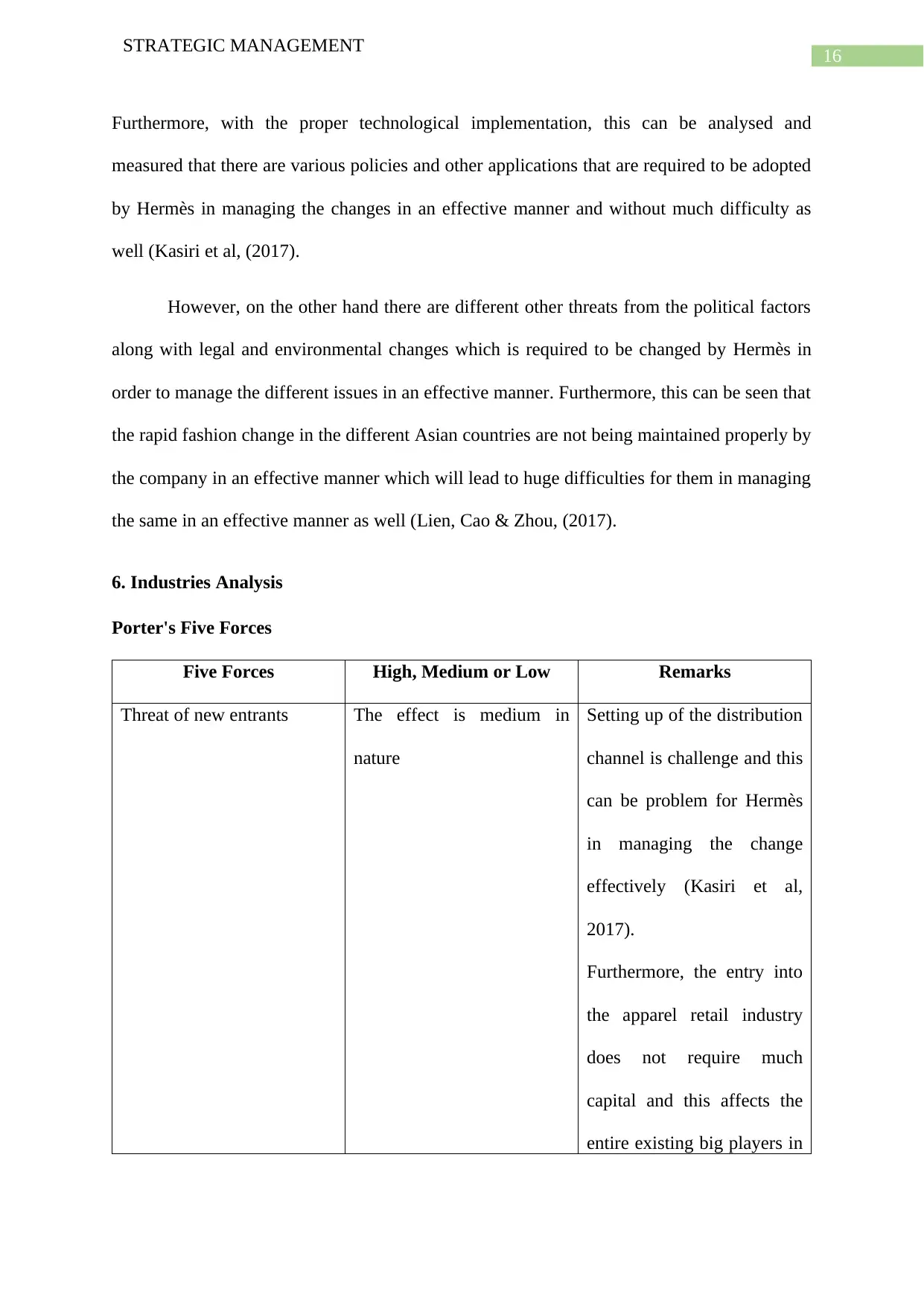
16
STRATEGIC MANAGEMENT
Furthermore, with the proper technological implementation, this can be analysed and
measured that there are various policies and other applications that are required to be adopted
by Hermès in managing the changes in an effective manner and without much difficulty as
well (Kasiri et al, (2017).
However, on the other hand there are different other threats from the political factors
along with legal and environmental changes which is required to be changed by Hermès in
order to manage the different issues in an effective manner. Furthermore, this can be seen that
the rapid fashion change in the different Asian countries are not being maintained properly by
the company in an effective manner which will lead to huge difficulties for them in managing
the same in an effective manner as well (Lien, Cao & Zhou, (2017).
6. Industries Analysis
Porter's Five Forces
Five Forces High, Medium or Low Remarks
Threat of new entrants The effect is medium in
nature
Setting up of the distribution
channel is challenge and this
can be problem for Hermès
in managing the change
effectively (Kasiri et al,
2017).
Furthermore, the entry into
the apparel retail industry
does not require much
capital and this affects the
entire existing big players in
STRATEGIC MANAGEMENT
Furthermore, with the proper technological implementation, this can be analysed and
measured that there are various policies and other applications that are required to be adopted
by Hermès in managing the changes in an effective manner and without much difficulty as
well (Kasiri et al, (2017).
However, on the other hand there are different other threats from the political factors
along with legal and environmental changes which is required to be changed by Hermès in
order to manage the different issues in an effective manner. Furthermore, this can be seen that
the rapid fashion change in the different Asian countries are not being maintained properly by
the company in an effective manner which will lead to huge difficulties for them in managing
the same in an effective manner as well (Lien, Cao & Zhou, (2017).
6. Industries Analysis
Porter's Five Forces
Five Forces High, Medium or Low Remarks
Threat of new entrants The effect is medium in
nature
Setting up of the distribution
channel is challenge and this
can be problem for Hermès
in managing the change
effectively (Kasiri et al,
2017).
Furthermore, the entry into
the apparel retail industry
does not require much
capital and this affects the
entire existing big players in
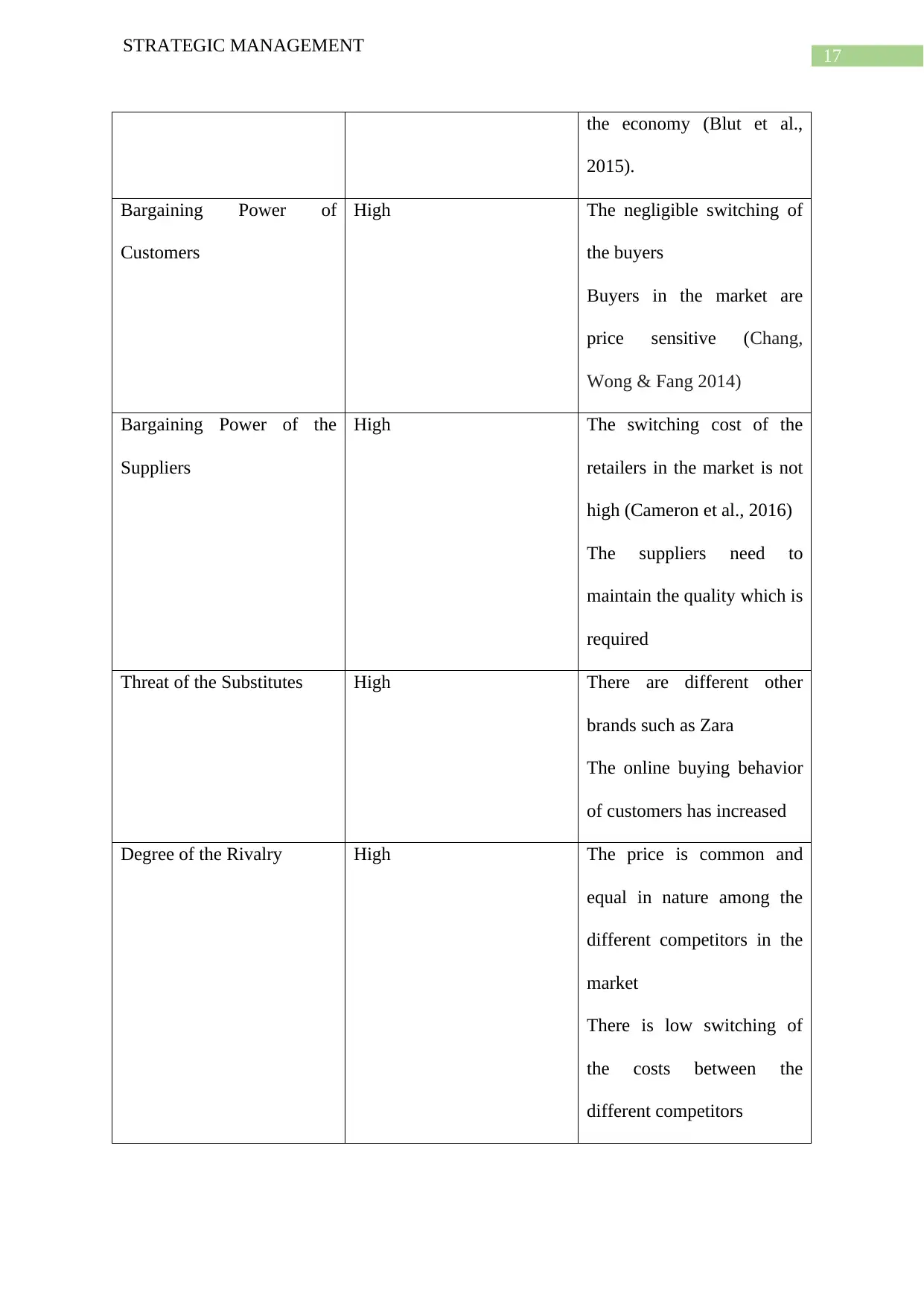
17
STRATEGIC MANAGEMENT
the economy (Blut et al.,
2015).
Bargaining Power of
Customers
High The negligible switching of
the buyers
Buyers in the market are
price sensitive (Chang,
Wong & Fang 2014)
Bargaining Power of the
Suppliers
High The switching cost of the
retailers in the market is not
high (Cameron et al., 2016)
The suppliers need to
maintain the quality which is
required
Threat of the Substitutes High There are different other
brands such as Zara
The online buying behavior
of customers has increased
Degree of the Rivalry High The price is common and
equal in nature among the
different competitors in the
market
There is low switching of
the costs between the
different competitors
STRATEGIC MANAGEMENT
the economy (Blut et al.,
2015).
Bargaining Power of
Customers
High The negligible switching of
the buyers
Buyers in the market are
price sensitive (Chang,
Wong & Fang 2014)
Bargaining Power of the
Suppliers
High The switching cost of the
retailers in the market is not
high (Cameron et al., 2016)
The suppliers need to
maintain the quality which is
required
Threat of the Substitutes High There are different other
brands such as Zara
The online buying behavior
of customers has increased
Degree of the Rivalry High The price is common and
equal in nature among the
different competitors in the
market
There is low switching of
the costs between the
different competitors
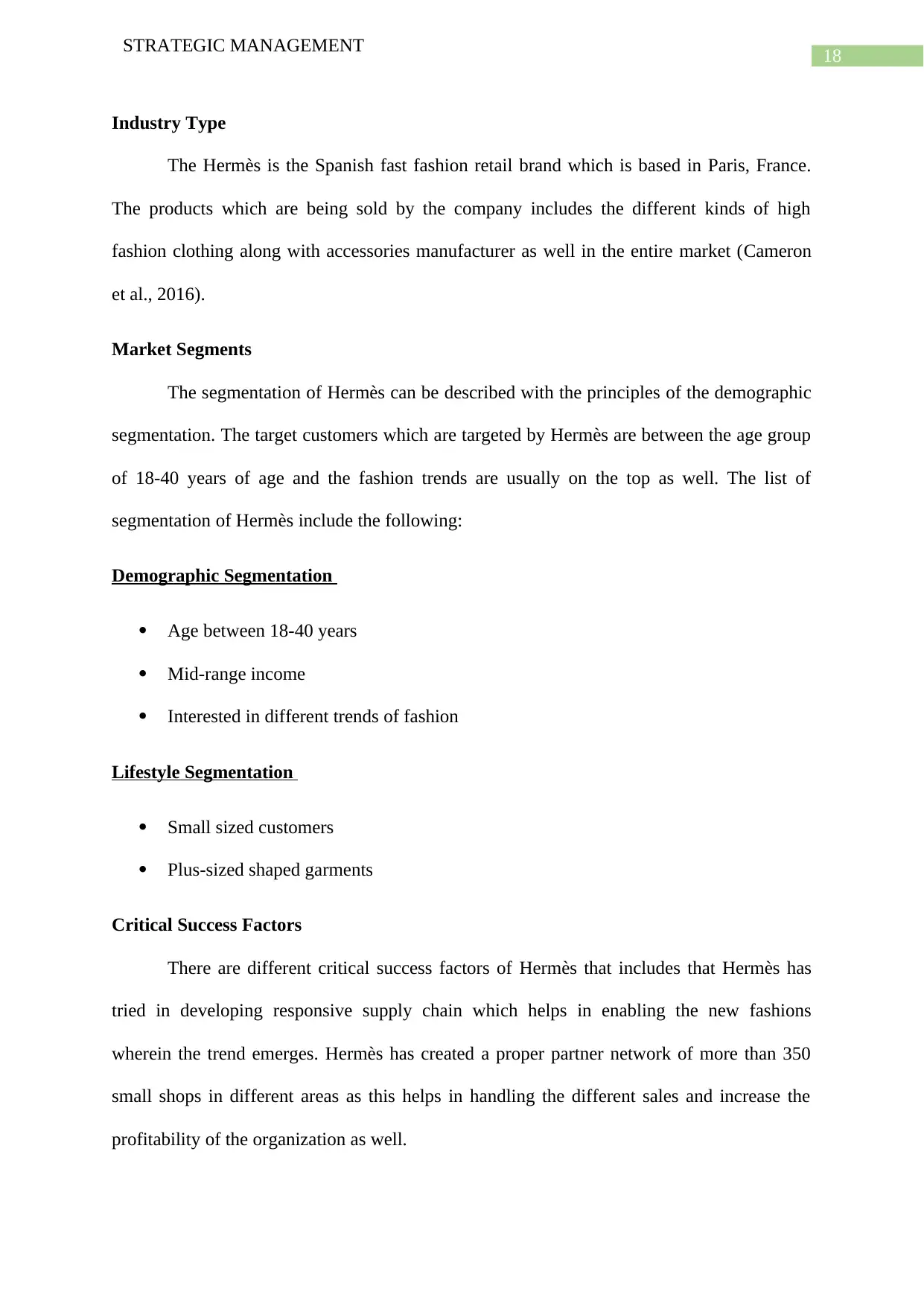
18
STRATEGIC MANAGEMENT
Industry Type
The Hermès is the Spanish fast fashion retail brand which is based in Paris, France.
The products which are being sold by the company includes the different kinds of high
fashion clothing along with accessories manufacturer as well in the entire market (Cameron
et al., 2016).
Market Segments
The segmentation of Hermès can be described with the principles of the demographic
segmentation. The target customers which are targeted by Hermès are between the age group
of 18-40 years of age and the fashion trends are usually on the top as well. The list of
segmentation of Hermès include the following:
Demographic Segmentation
Age between 18-40 years
Mid-range income
Interested in different trends of fashion
Lifestyle Segmentation
Small sized customers
Plus-sized shaped garments
Critical Success Factors
There are different critical success factors of Hermès that includes that Hermès has
tried in developing responsive supply chain which helps in enabling the new fashions
wherein the trend emerges. Hermès has created a proper partner network of more than 350
small shops in different areas as this helps in handling the different sales and increase the
profitability of the organization as well.
STRATEGIC MANAGEMENT
Industry Type
The Hermès is the Spanish fast fashion retail brand which is based in Paris, France.
The products which are being sold by the company includes the different kinds of high
fashion clothing along with accessories manufacturer as well in the entire market (Cameron
et al., 2016).
Market Segments
The segmentation of Hermès can be described with the principles of the demographic
segmentation. The target customers which are targeted by Hermès are between the age group
of 18-40 years of age and the fashion trends are usually on the top as well. The list of
segmentation of Hermès include the following:
Demographic Segmentation
Age between 18-40 years
Mid-range income
Interested in different trends of fashion
Lifestyle Segmentation
Small sized customers
Plus-sized shaped garments
Critical Success Factors
There are different critical success factors of Hermès that includes that Hermès has
tried in developing responsive supply chain which helps in enabling the new fashions
wherein the trend emerges. Hermès has created a proper partner network of more than 350
small shops in different areas as this helps in handling the different sales and increase the
profitability of the organization as well.
Paraphrase This Document
Need a fresh take? Get an instant paraphrase of this document with our AI Paraphraser
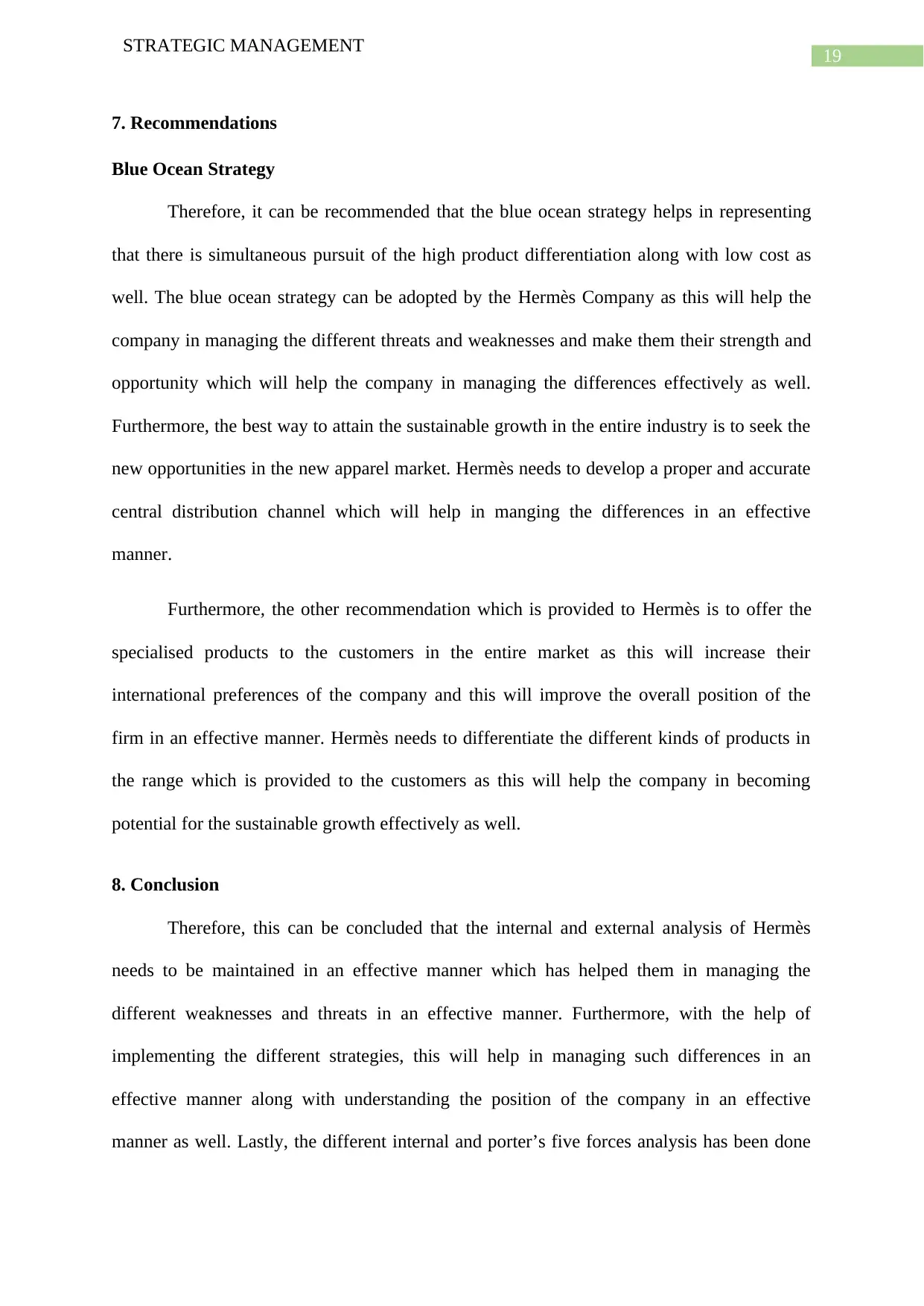
19
STRATEGIC MANAGEMENT
7. Recommendations
Blue Ocean Strategy
Therefore, it can be recommended that the blue ocean strategy helps in representing
that there is simultaneous pursuit of the high product differentiation along with low cost as
well. The blue ocean strategy can be adopted by the Hermès Company as this will help the
company in managing the different threats and weaknesses and make them their strength and
opportunity which will help the company in managing the differences effectively as well.
Furthermore, the best way to attain the sustainable growth in the entire industry is to seek the
new opportunities in the new apparel market. Hermès needs to develop a proper and accurate
central distribution channel which will help in manging the differences in an effective
manner.
Furthermore, the other recommendation which is provided to Hermès is to offer the
specialised products to the customers in the entire market as this will increase their
international preferences of the company and this will improve the overall position of the
firm in an effective manner. Hermès needs to differentiate the different kinds of products in
the range which is provided to the customers as this will help the company in becoming
potential for the sustainable growth effectively as well.
8. Conclusion
Therefore, this can be concluded that the internal and external analysis of Hermès
needs to be maintained in an effective manner which has helped them in managing the
different weaknesses and threats in an effective manner. Furthermore, with the help of
implementing the different strategies, this will help in managing such differences in an
effective manner along with understanding the position of the company in an effective
manner as well. Lastly, the different internal and porter’s five forces analysis has been done
STRATEGIC MANAGEMENT
7. Recommendations
Blue Ocean Strategy
Therefore, it can be recommended that the blue ocean strategy helps in representing
that there is simultaneous pursuit of the high product differentiation along with low cost as
well. The blue ocean strategy can be adopted by the Hermès Company as this will help the
company in managing the different threats and weaknesses and make them their strength and
opportunity which will help the company in managing the differences effectively as well.
Furthermore, the best way to attain the sustainable growth in the entire industry is to seek the
new opportunities in the new apparel market. Hermès needs to develop a proper and accurate
central distribution channel which will help in manging the differences in an effective
manner.
Furthermore, the other recommendation which is provided to Hermès is to offer the
specialised products to the customers in the entire market as this will increase their
international preferences of the company and this will improve the overall position of the
firm in an effective manner. Hermès needs to differentiate the different kinds of products in
the range which is provided to the customers as this will help the company in becoming
potential for the sustainable growth effectively as well.
8. Conclusion
Therefore, this can be concluded that the internal and external analysis of Hermès
needs to be maintained in an effective manner which has helped them in managing the
different weaknesses and threats in an effective manner. Furthermore, with the help of
implementing the different strategies, this will help in managing such differences in an
effective manner along with understanding the position of the company in an effective
manner as well. Lastly, the different internal and porter’s five forces analysis has been done
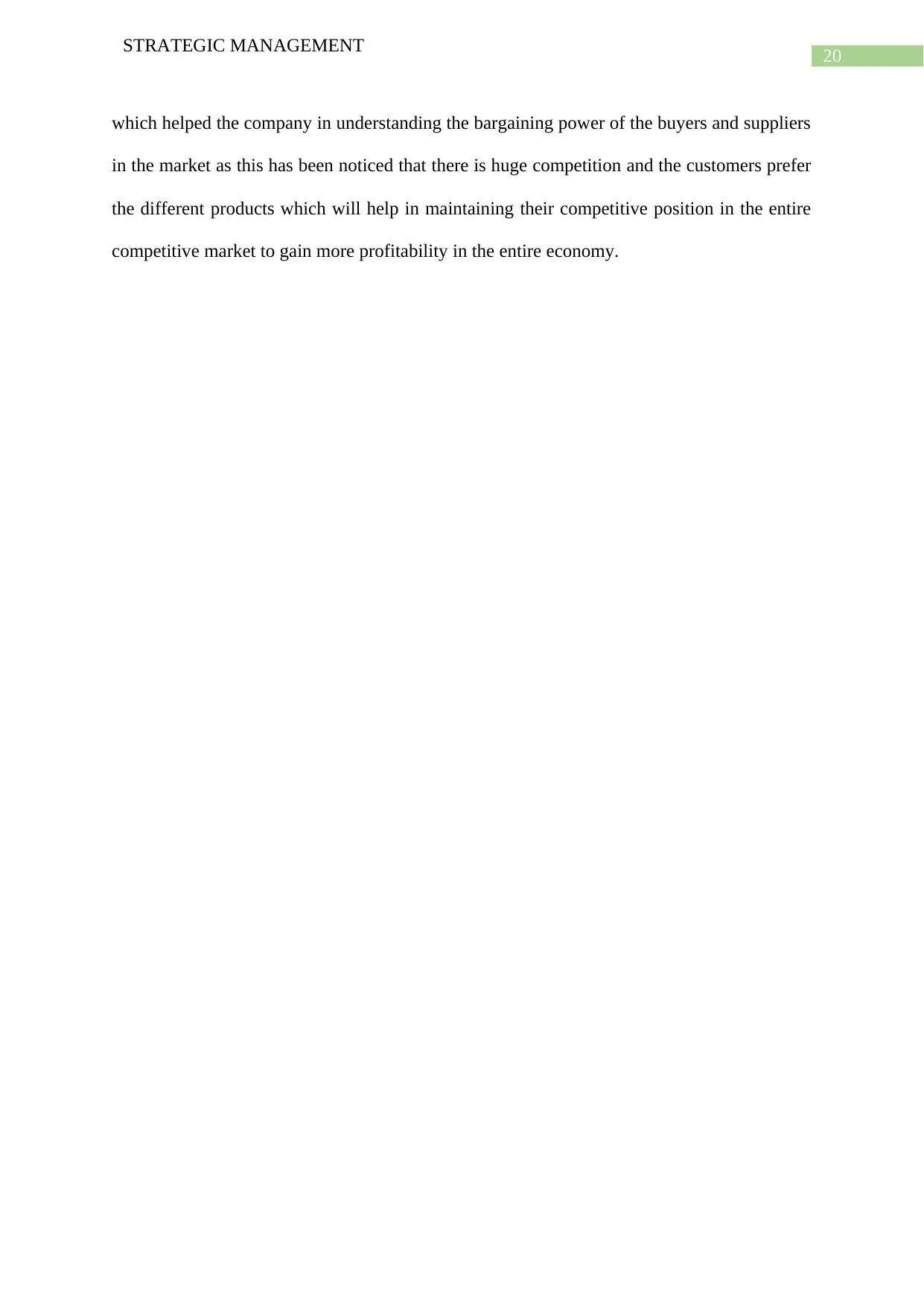
20
STRATEGIC MANAGEMENT
which helped the company in understanding the bargaining power of the buyers and suppliers
in the market as this has been noticed that there is huge competition and the customers prefer
the different products which will help in maintaining their competitive position in the entire
competitive market to gain more profitability in the entire economy.
STRATEGIC MANAGEMENT
which helped the company in understanding the bargaining power of the buyers and suppliers
in the market as this has been noticed that there is huge competition and the customers prefer
the different products which will help in maintaining their competitive position in the entire
competitive market to gain more profitability in the entire economy.

21
STRATEGIC MANAGEMENT
References
Blut, M., Chowdhry, N., Mittal, V., & Brock, C. (2015). E-service quality: A meta-analytic
review. Journal of Retailing, 91(4), 679-700.
Bromiley, P., McShane, M., Nair, A., & Rustambekov, E. (2015). Enterprise risk
management: Review, critique, and research directions. Long range planning, 48(4),
265-276.
Cameron, A. J., Charlton, E., Ngan, W. W., & Sacks, G. (2016). A systematic review of the
effectiveness of supermarket-based interventions involving product, promotion, or
place on the healthiness of consumer purchases. Current Nutrition Reports, 5(3), 129-
138.
Chang, H.H., Wong, K.H. & Fang, P.W., (2014). The effects of customer relationship
management relational information processes on customer-based performance. Decision
Support Systems, 66, pp.146-159.
Chatzoglou, P. D., Chatzoudes, D., Sarigiannidis, L., & Theriou, G. (2017). The role of firm-
specific factors in the strategy-performance relationship: revisiting the resource-based
view of the firm and the VRIO framework. Management Research Review, (just-
accepted), 00-00.
Choi, Y.G., Choi, Y.G., Ok, C.M., Ok, C.M., Hyun, S.S. & Hyun, S.S., (2017). Relationships
between brand experiences, personality traits, prestige, relationship quality, and
loyalty: An empirical analysis of coffeehouse brands. International Journal of
Contemporary Hospitality Management, 29(4), pp.1185-1202.
STRATEGIC MANAGEMENT
References
Blut, M., Chowdhry, N., Mittal, V., & Brock, C. (2015). E-service quality: A meta-analytic
review. Journal of Retailing, 91(4), 679-700.
Bromiley, P., McShane, M., Nair, A., & Rustambekov, E. (2015). Enterprise risk
management: Review, critique, and research directions. Long range planning, 48(4),
265-276.
Cameron, A. J., Charlton, E., Ngan, W. W., & Sacks, G. (2016). A systematic review of the
effectiveness of supermarket-based interventions involving product, promotion, or
place on the healthiness of consumer purchases. Current Nutrition Reports, 5(3), 129-
138.
Chang, H.H., Wong, K.H. & Fang, P.W., (2014). The effects of customer relationship
management relational information processes on customer-based performance. Decision
Support Systems, 66, pp.146-159.
Chatzoglou, P. D., Chatzoudes, D., Sarigiannidis, L., & Theriou, G. (2017). The role of firm-
specific factors in the strategy-performance relationship: revisiting the resource-based
view of the firm and the VRIO framework. Management Research Review, (just-
accepted), 00-00.
Choi, Y.G., Choi, Y.G., Ok, C.M., Ok, C.M., Hyun, S.S. & Hyun, S.S., (2017). Relationships
between brand experiences, personality traits, prestige, relationship quality, and
loyalty: An empirical analysis of coffeehouse brands. International Journal of
Contemporary Hospitality Management, 29(4), pp.1185-1202.
Secure Best Marks with AI Grader
Need help grading? Try our AI Grader for instant feedback on your assignments.
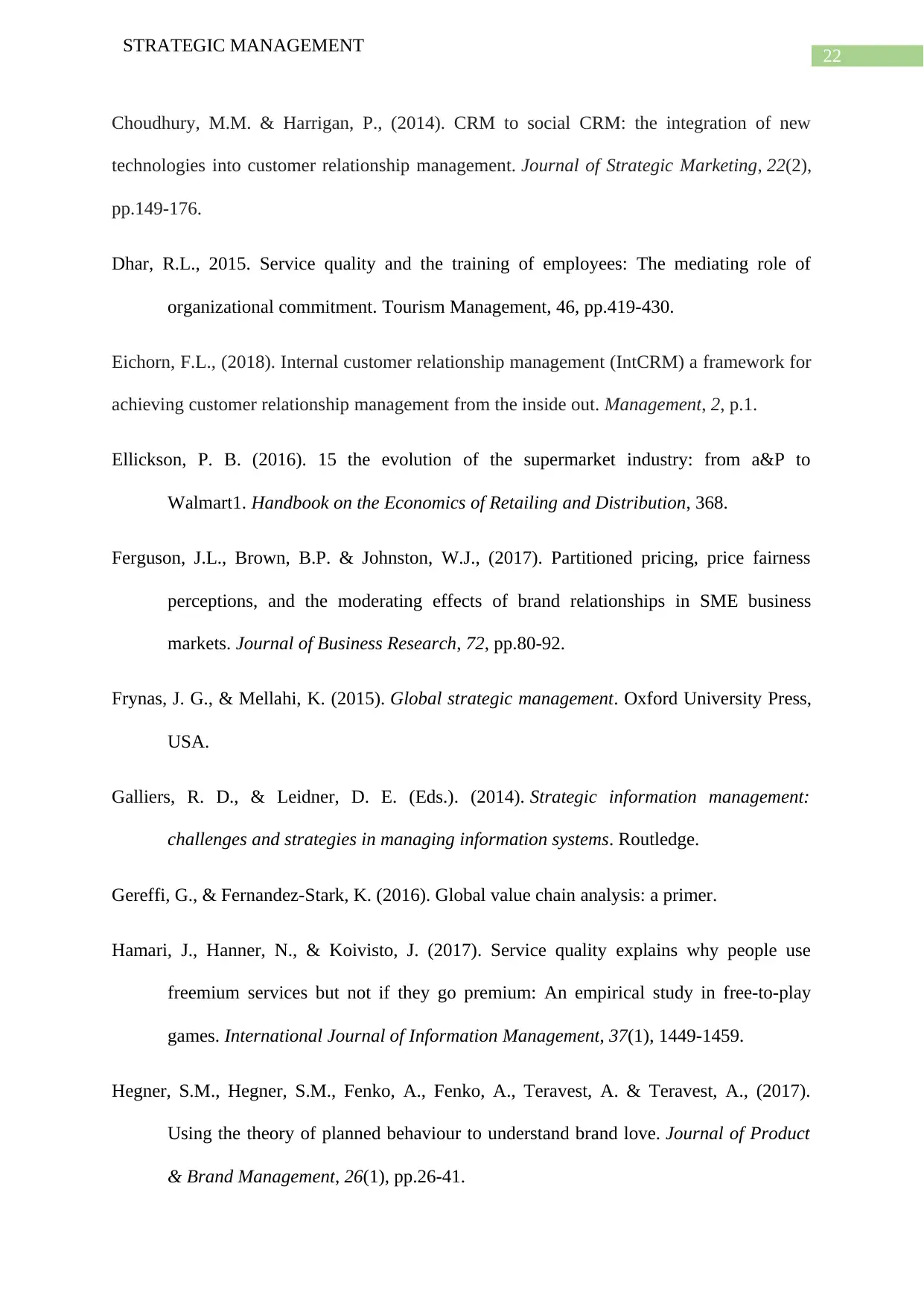
22
STRATEGIC MANAGEMENT
Choudhury, M.M. & Harrigan, P., (2014). CRM to social CRM: the integration of new
technologies into customer relationship management. Journal of Strategic Marketing, 22(2),
pp.149-176.
Dhar, R.L., 2015. Service quality and the training of employees: The mediating role of
organizational commitment. Tourism Management, 46, pp.419-430.
Eichorn, F.L., (2018). Internal customer relationship management (IntCRM) a framework for
achieving customer relationship management from the inside out. Management, 2, p.1.
Ellickson, P. B. (2016). 15 the evolution of the supermarket industry: from a&P to
Walmart1. Handbook on the Economics of Retailing and Distribution, 368.
Ferguson, J.L., Brown, B.P. & Johnston, W.J., (2017). Partitioned pricing, price fairness
perceptions, and the moderating effects of brand relationships in SME business
markets. Journal of Business Research, 72, pp.80-92.
Frynas, J. G., & Mellahi, K. (2015). Global strategic management. Oxford University Press,
USA.
Galliers, R. D., & Leidner, D. E. (Eds.). (2014). Strategic information management:
challenges and strategies in managing information systems. Routledge.
Gereffi, G., & Fernandez-Stark, K. (2016). Global value chain analysis: a primer.
Hamari, J., Hanner, N., & Koivisto, J. (2017). Service quality explains why people use
freemium services but not if they go premium: An empirical study in free-to-play
games. International Journal of Information Management, 37(1), 1449-1459.
Hegner, S.M., Hegner, S.M., Fenko, A., Fenko, A., Teravest, A. & Teravest, A., (2017).
Using the theory of planned behaviour to understand brand love. Journal of Product
& Brand Management, 26(1), pp.26-41.
STRATEGIC MANAGEMENT
Choudhury, M.M. & Harrigan, P., (2014). CRM to social CRM: the integration of new
technologies into customer relationship management. Journal of Strategic Marketing, 22(2),
pp.149-176.
Dhar, R.L., 2015. Service quality and the training of employees: The mediating role of
organizational commitment. Tourism Management, 46, pp.419-430.
Eichorn, F.L., (2018). Internal customer relationship management (IntCRM) a framework for
achieving customer relationship management from the inside out. Management, 2, p.1.
Ellickson, P. B. (2016). 15 the evolution of the supermarket industry: from a&P to
Walmart1. Handbook on the Economics of Retailing and Distribution, 368.
Ferguson, J.L., Brown, B.P. & Johnston, W.J., (2017). Partitioned pricing, price fairness
perceptions, and the moderating effects of brand relationships in SME business
markets. Journal of Business Research, 72, pp.80-92.
Frynas, J. G., & Mellahi, K. (2015). Global strategic management. Oxford University Press,
USA.
Galliers, R. D., & Leidner, D. E. (Eds.). (2014). Strategic information management:
challenges and strategies in managing information systems. Routledge.
Gereffi, G., & Fernandez-Stark, K. (2016). Global value chain analysis: a primer.
Hamari, J., Hanner, N., & Koivisto, J. (2017). Service quality explains why people use
freemium services but not if they go premium: An empirical study in free-to-play
games. International Journal of Information Management, 37(1), 1449-1459.
Hegner, S.M., Hegner, S.M., Fenko, A., Fenko, A., Teravest, A. & Teravest, A., (2017).
Using the theory of planned behaviour to understand brand love. Journal of Product
& Brand Management, 26(1), pp.26-41.
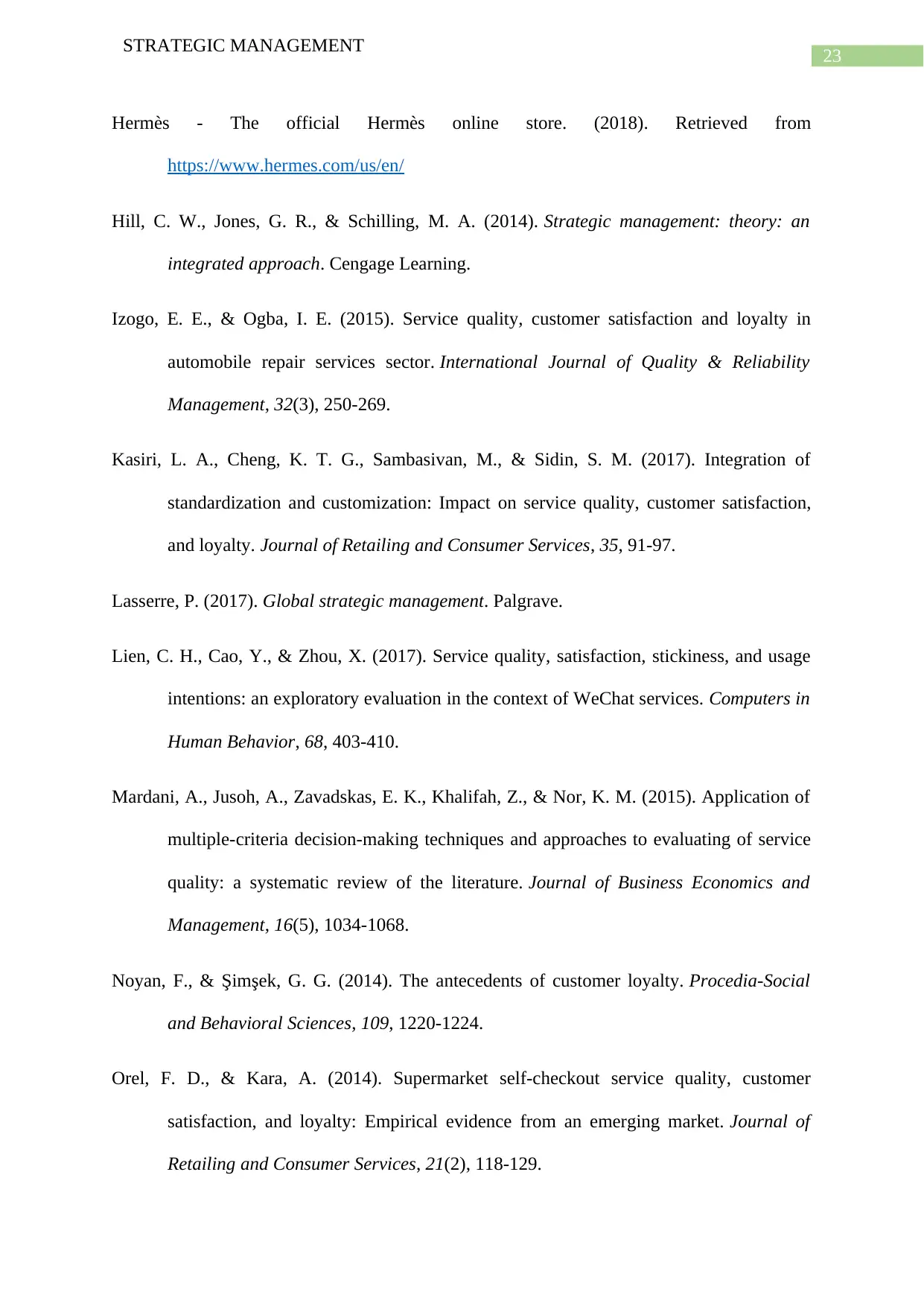
23
STRATEGIC MANAGEMENT
Hermès - The official Hermès online store. (2018). Retrieved from
https://www.hermes.com/us/en/
Hill, C. W., Jones, G. R., & Schilling, M. A. (2014). Strategic management: theory: an
integrated approach. Cengage Learning.
Izogo, E. E., & Ogba, I. E. (2015). Service quality, customer satisfaction and loyalty in
automobile repair services sector. International Journal of Quality & Reliability
Management, 32(3), 250-269.
Kasiri, L. A., Cheng, K. T. G., Sambasivan, M., & Sidin, S. M. (2017). Integration of
standardization and customization: Impact on service quality, customer satisfaction,
and loyalty. Journal of Retailing and Consumer Services, 35, 91-97.
Lasserre, P. (2017). Global strategic management. Palgrave.
Lien, C. H., Cao, Y., & Zhou, X. (2017). Service quality, satisfaction, stickiness, and usage
intentions: an exploratory evaluation in the context of WeChat services. Computers in
Human Behavior, 68, 403-410.
Mardani, A., Jusoh, A., Zavadskas, E. K., Khalifah, Z., & Nor, K. M. (2015). Application of
multiple-criteria decision-making techniques and approaches to evaluating of service
quality: a systematic review of the literature. Journal of Business Economics and
Management, 16(5), 1034-1068.
Noyan, F., & Şimşek, G. G. (2014). The antecedents of customer loyalty. Procedia-Social
and Behavioral Sciences, 109, 1220-1224.
Orel, F. D., & Kara, A. (2014). Supermarket self-checkout service quality, customer
satisfaction, and loyalty: Empirical evidence from an emerging market. Journal of
Retailing and Consumer Services, 21(2), 118-129.
STRATEGIC MANAGEMENT
Hermès - The official Hermès online store. (2018). Retrieved from
https://www.hermes.com/us/en/
Hill, C. W., Jones, G. R., & Schilling, M. A. (2014). Strategic management: theory: an
integrated approach. Cengage Learning.
Izogo, E. E., & Ogba, I. E. (2015). Service quality, customer satisfaction and loyalty in
automobile repair services sector. International Journal of Quality & Reliability
Management, 32(3), 250-269.
Kasiri, L. A., Cheng, K. T. G., Sambasivan, M., & Sidin, S. M. (2017). Integration of
standardization and customization: Impact on service quality, customer satisfaction,
and loyalty. Journal of Retailing and Consumer Services, 35, 91-97.
Lasserre, P. (2017). Global strategic management. Palgrave.
Lien, C. H., Cao, Y., & Zhou, X. (2017). Service quality, satisfaction, stickiness, and usage
intentions: an exploratory evaluation in the context of WeChat services. Computers in
Human Behavior, 68, 403-410.
Mardani, A., Jusoh, A., Zavadskas, E. K., Khalifah, Z., & Nor, K. M. (2015). Application of
multiple-criteria decision-making techniques and approaches to evaluating of service
quality: a systematic review of the literature. Journal of Business Economics and
Management, 16(5), 1034-1068.
Noyan, F., & Şimşek, G. G. (2014). The antecedents of customer loyalty. Procedia-Social
and Behavioral Sciences, 109, 1220-1224.
Orel, F. D., & Kara, A. (2014). Supermarket self-checkout service quality, customer
satisfaction, and loyalty: Empirical evidence from an emerging market. Journal of
Retailing and Consumer Services, 21(2), 118-129.
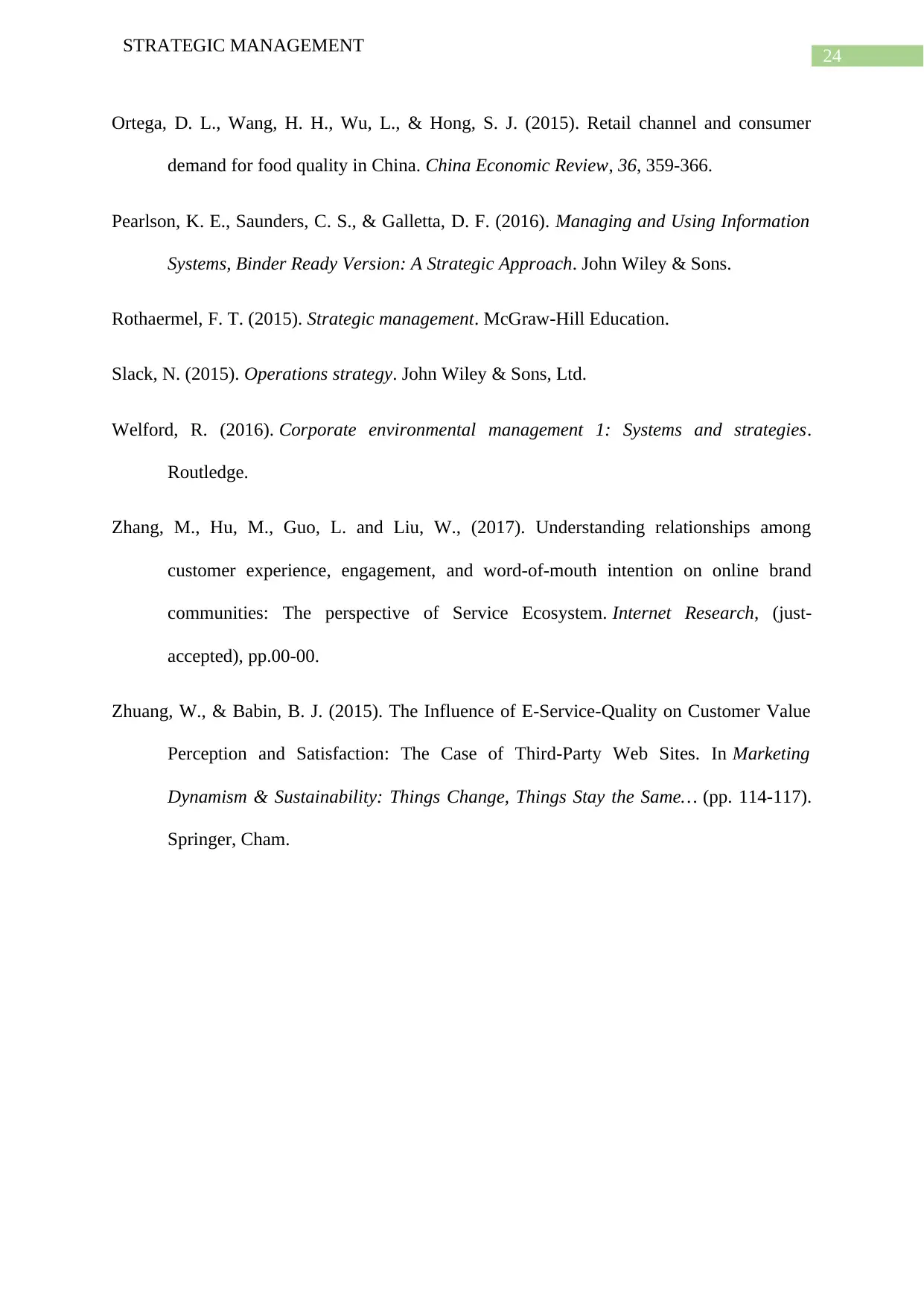
24
STRATEGIC MANAGEMENT
Ortega, D. L., Wang, H. H., Wu, L., & Hong, S. J. (2015). Retail channel and consumer
demand for food quality in China. China Economic Review, 36, 359-366.
Pearlson, K. E., Saunders, C. S., & Galletta, D. F. (2016). Managing and Using Information
Systems, Binder Ready Version: A Strategic Approach. John Wiley & Sons.
Rothaermel, F. T. (2015). Strategic management. McGraw-Hill Education.
Slack, N. (2015). Operations strategy. John Wiley & Sons, Ltd.
Welford, R. (2016). Corporate environmental management 1: Systems and strategies.
Routledge.
Zhang, M., Hu, M., Guo, L. and Liu, W., (2017). Understanding relationships among
customer experience, engagement, and word-of-mouth intention on online brand
communities: The perspective of Service Ecosystem. Internet Research, (just-
accepted), pp.00-00.
Zhuang, W., & Babin, B. J. (2015). The Influence of E-Service-Quality on Customer Value
Perception and Satisfaction: The Case of Third-Party Web Sites. In Marketing
Dynamism & Sustainability: Things Change, Things Stay the Same… (pp. 114-117).
Springer, Cham.
STRATEGIC MANAGEMENT
Ortega, D. L., Wang, H. H., Wu, L., & Hong, S. J. (2015). Retail channel and consumer
demand for food quality in China. China Economic Review, 36, 359-366.
Pearlson, K. E., Saunders, C. S., & Galletta, D. F. (2016). Managing and Using Information
Systems, Binder Ready Version: A Strategic Approach. John Wiley & Sons.
Rothaermel, F. T. (2015). Strategic management. McGraw-Hill Education.
Slack, N. (2015). Operations strategy. John Wiley & Sons, Ltd.
Welford, R. (2016). Corporate environmental management 1: Systems and strategies.
Routledge.
Zhang, M., Hu, M., Guo, L. and Liu, W., (2017). Understanding relationships among
customer experience, engagement, and word-of-mouth intention on online brand
communities: The perspective of Service Ecosystem. Internet Research, (just-
accepted), pp.00-00.
Zhuang, W., & Babin, B. J. (2015). The Influence of E-Service-Quality on Customer Value
Perception and Satisfaction: The Case of Third-Party Web Sites. In Marketing
Dynamism & Sustainability: Things Change, Things Stay the Same… (pp. 114-117).
Springer, Cham.
1 out of 25
Related Documents
Your All-in-One AI-Powered Toolkit for Academic Success.
+13062052269
info@desklib.com
Available 24*7 on WhatsApp / Email
![[object Object]](/_next/static/media/star-bottom.7253800d.svg)
Unlock your academic potential
© 2024 | Zucol Services PVT LTD | All rights reserved.





